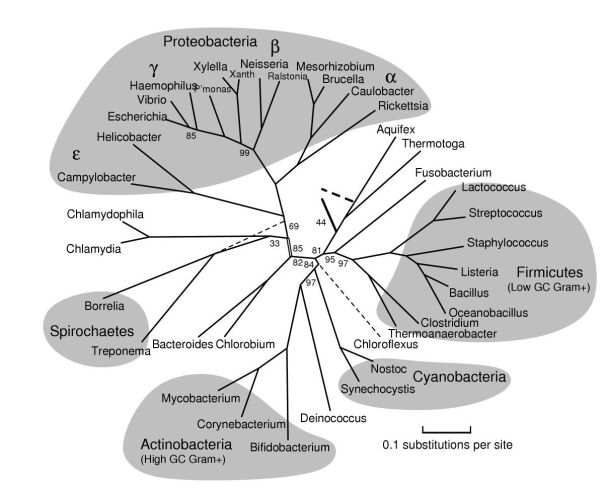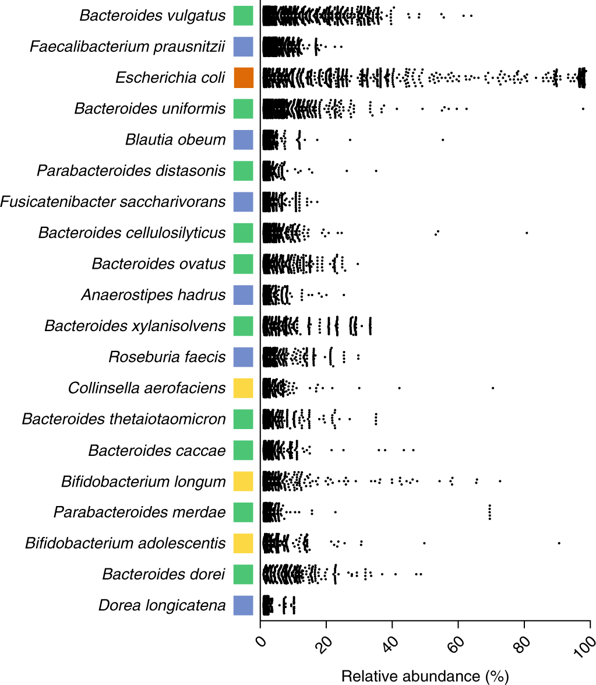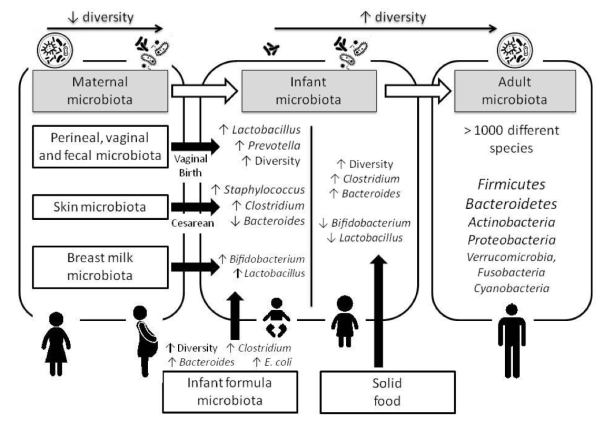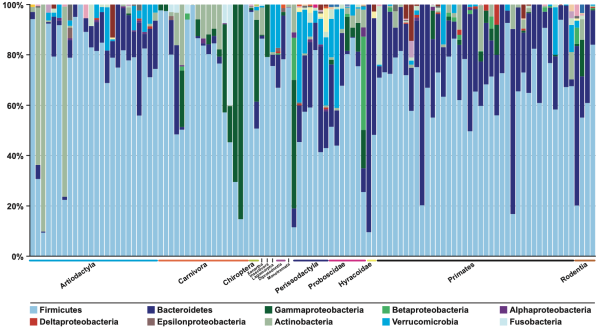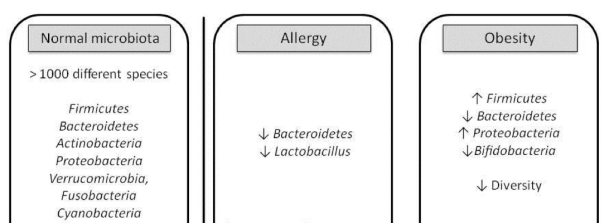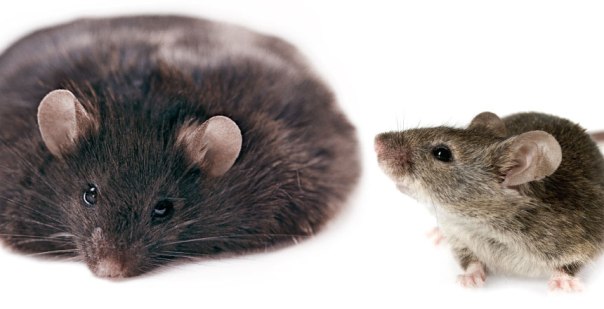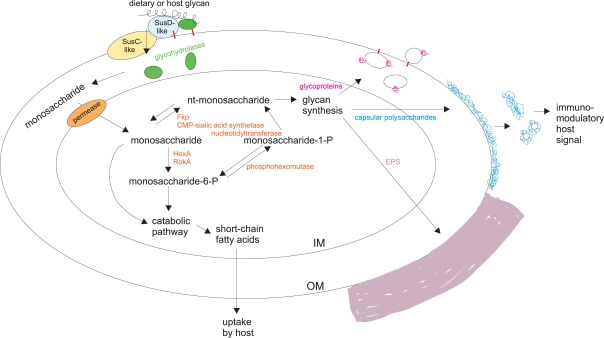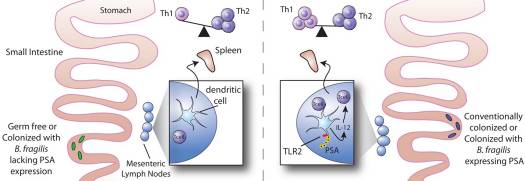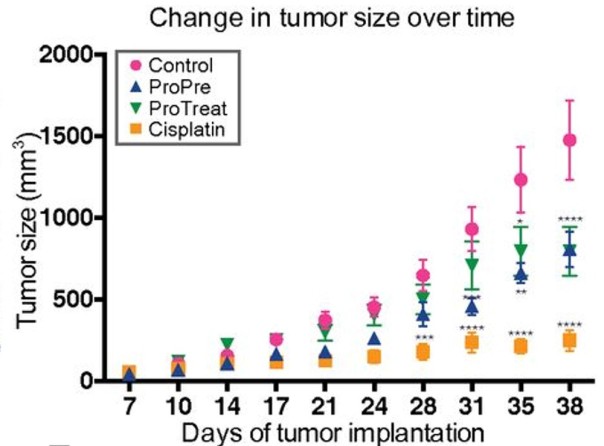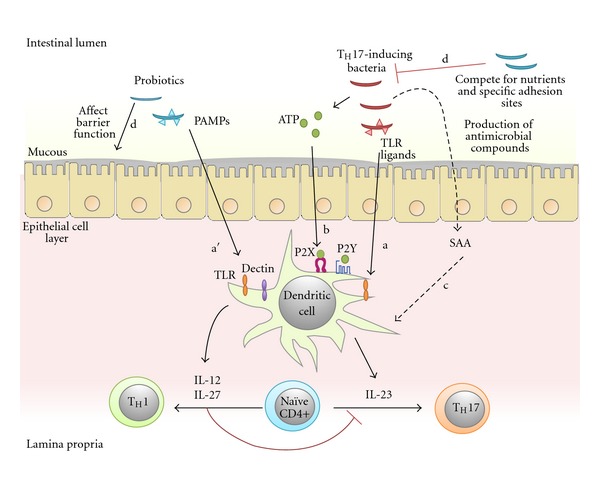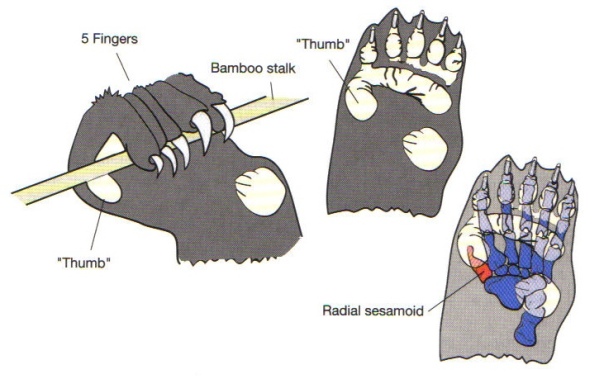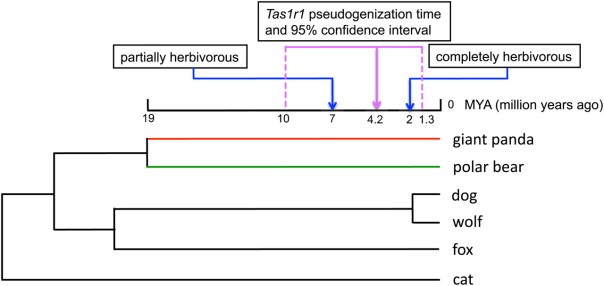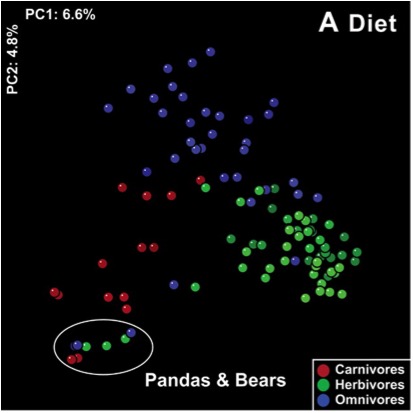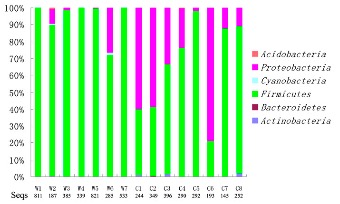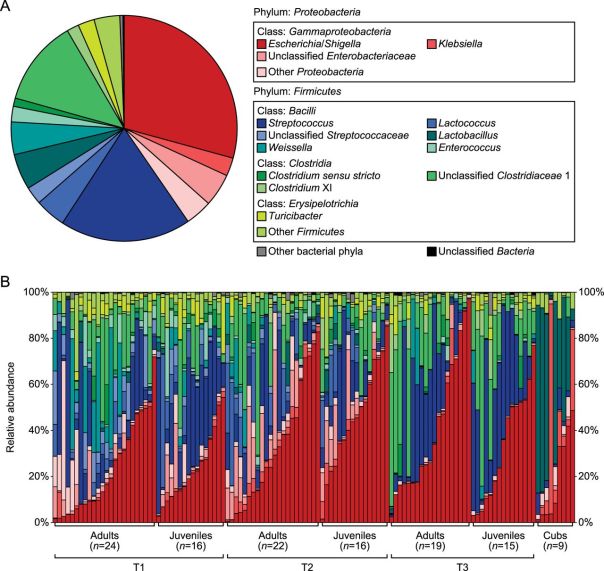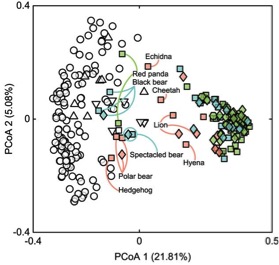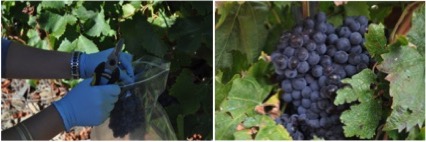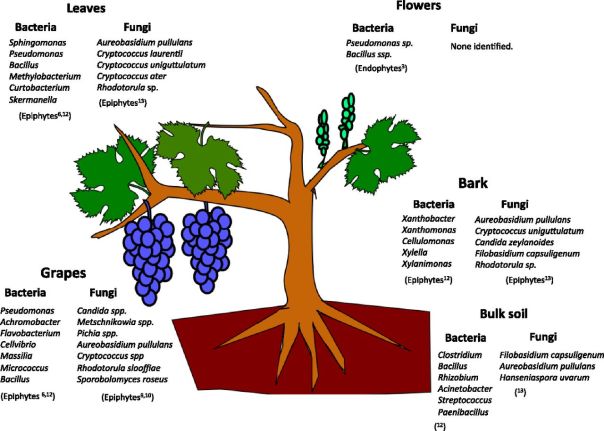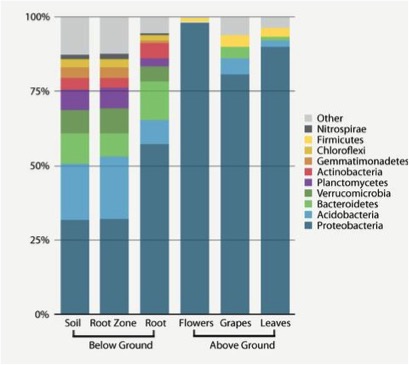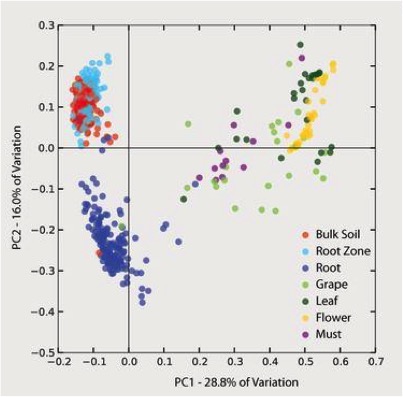Author Archives: Albert Bordons
Yeasts 3000-years-old are alive and other histories of dormant cells
18th August 2019
Translated from the original article in Catalan
A few months ago -April 2019- my friend Jordi Diloli, Professor and Archaeologist, shared a very surprising article (Aouizerat et al 2019) with me. It was echoed on the internet (Borschel-Dan 2019), and I will comment here.
“Resurrected” yeasts from 3,000 years ago
The group of researchers led by Ronen Hazan of the Hebrew University of Jerusalem took samples of 21 clay containers from various sites in present-day Israel from 2500 to 5000 years ago, from the Persian, Philistine and Egyptian (this is the oldest) periods. Archaeologists believed that these vessels contained fermented beverages such as beer or mead (Figure 1). The authors submerged the containers in a rich YPD medium, specific for growing yeasts and other fungi, and incubated them at room temperature for 7 days. Then, samples of this medium were spread on agar plates with the specific medium, and the resulting colonies were isolated for subsequent analyses (Aouizerat et al 2019).
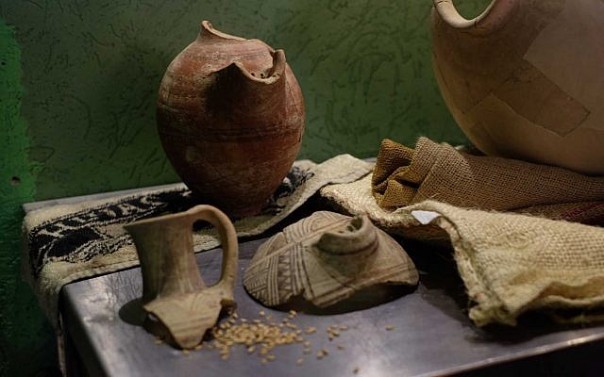
Figure 1. Clay vessels from where the yeasts were isolated (Image of Judah Ari Gross, Times of Israel).
The isolates that were found were 6 strains of different yeast species, and one of which was Saccharomyces cerevisiae, specifically from a Philistine site dated 3000 years ago. Obviously, it is very surprising that living yeasts of such ancient remains have been isolated. For this reason, the authors of the work carried out a series of experiments that could confirm this unique fact and that the isolates were not a product of contamination.
Firstly Aouizerat et al (2019) showed that it is possible to isolate yeasts from clay vessels that have contained beer or wine after a certain time. They did so with containers with unfiltered beer buried for 3 weeks, and also with another vessel that had repeatedly contained wine but not used last 2 years. With these samples they developed the isolation methodology and in both cases they were able to isolate yeasts. No isolates were obtained from a control sample with filtered beer, therefore without yeasts.
To demonstrate that the isolates were originals of the old vessels because these had contained the fermented beverage, authors applied the same protocol with samples of other ceramics that were surely not for this purpose, and also with sediments near the containers. The result was clearly negative for these samples: only 2 isolated yeasts from 110 samples, while the mentioned 6 yeast strains were isolated from the 21 initial samples. That is, yeasts would be significantly more abundant in containers of alcoholic fermented beverages than in other related archaeological vessels or sediments around them.
Another argument that supports the hypothesis of this work was the identification of these 6 yeasts. Total DNA was obtained and processed to sequence the genomes and compare them with the databases. Two of them, from the Egyptian period, were identified as Saccharomyces delphensis, a species that has been isolated from African dried figs and is not at all common on soil. Therefore, this suggests the use of figs in the alcoholic beverages of these containers. Another isolate was identified as Rhodotorula, common pollutant yeast in African beers. Another was identified as Debaryomyces, a frequent yeast in traditional African sorghum beers. As said before, another isolate was identified as Saccharomyces cerevisiae, the yeast most used to make wine, beer or bread (Figure 2). In spite of this, the genetic sequence of this S. cerevisiae was clearly different from the strains most commonly used today, as commercial or laboratory strains, and therefore the possibility of contamination is excluded. And finally, the other isolate was identified as Hypopichia burtonii, previously isolated yeast from Ethiopian mead.
These genetic data, together with the phenotypic characterization -fermentative kinetics and other biochemical characteristics carried out with the isolates by Aouizerat et al (2019)- suggest that these yeasts actually come from an environment related to alcoholic beverages. These authors even elaborated beer with these isolates and some of them, especially the Saccharomyces, gave a very good analytical and sensory result.

Figure 2. Saccharomyces cerevisiae at the scanning electronic microscope (MD Murtey & P Ramasamy)
Aouizerat et al (2019) conclude that the isolates are descendants of yeasts that were originally used 3000 years ago, in large quantities and in repeated fermentations. This would have facilitated their survival in pore microenvironments of the ceramic matrix of these containers, and the microcolonies would have continued to grow minimally for millennia thanks to the humidity and residual nutrients. The authors make the analogy with some handmade beers where it is usual that the containers waste serve as starter for new productions.
Finally, the authors of this work speculate that it is possible to isolate microorganisms from archaeological remains, not only yeasts, and that in the case of bacteria it could even be easier, given the resistance characteristics of some of them, such as the sporulated ones.
Is there no previous similar work to that of Aouizerat et al (2019) ?
As we have seen, this is certainly a very surprising finding. Scientifically, the work is quite accurate and has been “approved” by the international community: the article is published in an open-access journal with prestige (mBio, high impact factor: 6.7), of the American Society for Microbiology, where all the articles are reviewed by a minimum of two experts, besides the editors. The results presented by the article seem very well worked, and the conclusions are well reasoned.
However, in my opinion it is still almost incredible, and it is strange that nothing like this has been found before. Maybe if someone else had previously tried to isolate such old microorganisms without getting them, perhaps it would not have been published ? Maybe nobody has previously tried to do something similar ? A “malicious” explanation might be that archaeologists have their own interests and microbiologists or molecular biologists have others, and that for this type of work the collaboration of both is needed. Well, it seems not being so, since there are a lot of studies on microorganisms from ancient remains, but they have been almost always focused on the detection and analysis of ancient DNA. These studies demonstrated the presence of certain microorganisms although they did not proceed to isolate them.
DNA gives evidence of microorganisms in ancient remains
In relation to yeasts, the oldest evidence is that ribosomal DNA of Saccharomyces cerevisiae has been obtained from residues found in Egyptian wine jars 5000 years old (Cavalieri et al 2003). It must be remembered that the oldest archaeological evidence of large-scale wine production has 7400 years, in north of the Zagros Mountains, in present-day Iran (McGovern et al 1986). As it is known, S. cerevisiae is also the bread and beer yeast, derived from cereals, but since neither S. cerevisiae nor its spores are aerial, surely the use of this yeast in fermented grape juice, as well as dates, figs or honey, historically preceded its use for brewing and bread (Cavalieri et al 2003). It is probable that the wine yeasts naturally occurring in damaged grapes (Mortimer & Polsinelli 1999) were used to ferment other cereal products such as cereals, and after centuries of selection for humans, they evolved into specific strains to ferment food and beverages from cereals.
The genomes of pathogenic microorganisms have also been studied in archaeological remains by means of new massive DNA sequencing techniques, in order to know to epidemic diseases of historical importance, such as black plague, tuberculosis, cholera or leprosy (Andam et al 2016). Logically, in these cases the archaeological remains are human ones, such as bones, teeth, coprolites or mummified tissues. In this way, for example, the phylogeny and evolution of Yersinia pestis strains causing the black plague have been recognized by remains of the Bronze Age (5000 years ago) and until the well-known epidemics of the 6th and 14th centuries (Bos et al 2011). Another well-known case is the Helicobacter pylori genome identified in the intestine of the Ötzi mummy, the iceman in the eastern Alps, 5300 years old (Maixner et al 2016).
DNA has also been isolated from specific bacteria of the human gut, such as Bifidobacterium and Bacteroides, to demonstrate the human presence in archaeological sediments 5000-12000 years old, in north east of Poland (Madeja et al 2009).
It should be remembered that DNA is degraded over time, and in fact it is more unstable than other cellular components. This macromolecule spontaneously suffers damage by oxidation, hydrolysis, and fragmentation in pieces that may be less than 100 bp. Most fossils or other biological remains of more than 100,000 years old no longer contain PCR-amplifiable DNA (Hofreiter et al 2001), although it seems that if the samples are extracted from frozen sediments, with constant temperatures below zero, DNA could be recovered from up to 400,000 years or a little longer (Willerslev et al 2003). In addition the tissues are colonized over time by fungi and bacteria that greatly reduce the relative amount of endogenous molecules and can contribute to giving false positives. The risk of contamination is very high and often this is not taken in account. Generally the DNA of the host that is analysed can be less than 1% of the total DNA found. All these factors complicate the DNA extraction, the construction of sequence libraries, the alignment of DNAs and the analysis of genomes (Andam et al 2016).
Surprisingly, there are a few published works where it is found old DNA of plants, animals and various microorganisms, some million years (My) old, even hundreds of My. The most remarkable are those obtained from amber samples of 20-40 My, and those obtained from a halite 250 My old. This would be comparable to the Jurassic Park fiction where almost non-degraded DNA from the dinosaurs of 100 My old “was recovered”.
Hebsgaard et al (2005) thoroughly reviewed all these more spectacular cases, with the conclusion that these works suffered from inadequate experimental approaches and inadequate authentication of the results. Therefore, there are great doubts as to whether DNA sequences and in some cases viable bacteria could survive such large geological times.
In addition, it is worrying that these works with so old DNA have not been replicated independently in order to confirm their authenticity, and that they did not show a relationship between the age of the sample and the persistence of DNA depending on the different types of bacteria (Willerslev et al 2004). In contrast, Willerslev et al studied the persistence of DNA in permafrost and they found a clear relationship of DNA degradation with time (Figure 3). As seen, DNA amount is very small beyond 100,000 years and it is hardly found beyond 1 My.
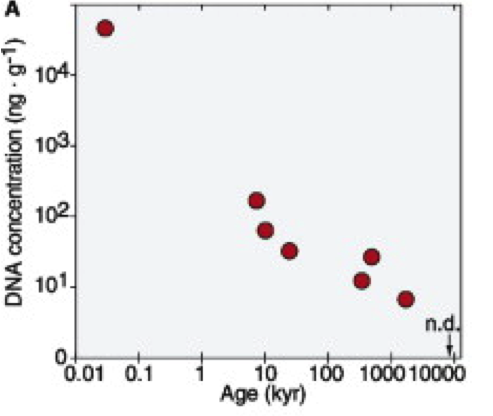
Figure 3. Persistence of not degraded bacterial DNA over time (kyr, thousands of years) maintained in permafrost, measured by fluorescence (Willerslev et al 2004).
When analysing the bacterial phyla of these DNA, Willerslev et al (2004) observed (Figure 4) that the most persistent are those of Arthrobacter, the main representative of Actinobacteria (high G+C gram-positive), followed by sporulated (Bacillaceae and Clostridiaceae), and finally the Gram-negative Proteobacteria.

Figure 4. Proportions of the main bacterial phyla (Actinobacteria in brown, sporulated in orange and Proteobacteria in blue) based on DNA obtained from permafrost samples, along time (kyr, thousands of years) (Willerslev et al 2004).
This increased persistence of non-sporulated Actinobacteria is surprising because sporulated bacteria have always been considered the most resistant of all types of cells. Although endospores have special adaptations such as proteins binding DNA to reduce the rate of genetic modifications, they do not have active metabolism or repair and their DNA will degrade over time. The mechanism of greater resistance of Actinobacteria is unknown, but there may be some activity and repair of DNA at temperatures below zero, and/or adaptations related to the dormant cells state (Willerslev et al 2004).
Anyway, the limit for PCR-amplifying the DNA would be between 400,000 years and 1.5 My for samples kept below zero, but this is much more unlikely in non-frozen materials, such as the amber of halite samples of million years, and much less likely to find viable cells from these samples so old (Willerslev et al 2004).
“Resurrected” bacteria
The same commented works where DNA of some millions of years (My) was found, are the most surprising cases of having “resurrected” microorganisms, basically bacteria: viable cells of the sporulated Bacillus from amber samples of 30 My (Cano & Borucki 1995), Staphylococcus also from amber of about 30 My (Lambert et al 1998), and the most spectacular case of Bacillus from an halite of 250 My (Vreeland et al 2000 ). This sporulated bacterium would have been in a hyper-saline environment of the last Permian and trapped in a salt crystal, surviving until now. In the case of Staphylococcus isolated from amber, in spite of not being sporulated, they are bacteria very resistant to extreme conditions, and which have been isolated also from ancient permafrost and very dry environments (Lambert et al 1998).
In spite of this, the revision of these cases by Hebsgaard et al (2005) concludes that none of them fulfilled the relative rate of molecular distance test, which is the probable rate of mutations calculated in comparison to related lineages. Therefore, these isolations are arguable and not reproduced. In addition, in the case of the 250 My Bacillus, it has been argued that the inclusion of bacteria in the halite could be the consequence of a subsequent recrystallization (Lowenstein et al 2011).
Another review on microorganism preservation records (Kennedy et al 1994) comments published cases up to 600 My, indicating that it is curious that there are several cases with more than 1 My, and also cases with less than 10,000 years ago, but there are very few cases of intermediate periods. These authors also point out the doubts raised by works with surviving bacteria so old, which would surely be artefacts or contaminations.
On the other hand, the most credible works are those of Abyzov et al (2006) and Soina et al (2004), which demonstrated the presence of several living microorganisms, both prokaryotes and eukaryotes (especially yeasts, but also some microalgae), in Antarctic ice samples that have some thousands of years. These authors combined classical microbiological methods, such as enrichment and isolation of colonies, together with epifluorescence microscopy, electronic microscopy, and molecular techniques. The bacteria found were Gram-positive (Micrococcus) and gram-negative (Arthrobacter), which are not sporulated, but they have cist-shaped dormant cells, which can survive while maintaining viability at temperatures below 0ºC for some thousands of years.
When geologically ancient DNA findings are published as well as viable cultures of ancient samples, the independent reproduction of the results by another laboratory is fundamental, to exclude any contamination from the same laboratory. In the case of having recovered living cells, it is necessary to demonstrate the reproducibility of the isolation, sequencing the genomes of the cultures obtained in independent laboratories from the same sample, and checking that in both cases the genomes coincide (Hebsgaard et al 2005).
From the remains of the Roman fort of Vindolanda, in the north of England, viable endospores of Thermoactinomyces, member of Bacillales (Unsworth et al 1977) have been recovered. They are about 1900 years old and the remains were a mixture of clay with straw and other vegetable materials. The authors propose to use these sporulated bacteria as indicators in archaeological studies.
Besides sporulated bacteria, there are several groups of non-sporulated ones for which anabiosis resistance abilities have been demonstrated. In particular, they have been isolated from permafrost and the tundra soil of Siberia of about 1 My (Suzina et al., 2006), in the limit of what we mentioned earlier (Willerslev et al 2004), which is quite difficult to believe. In order to study experimentally the formation of these anabiosis forms, Suzina et al incubated several gram-positive and gram-negative bacteria, and some archaea, in poor media with limiting nitrogen, and after a few months they obtained their dormant cells. They had cist structures, with capsule and a thickened cell wall, intramembranous particles and a condensed nucleoid (Figure 5). They also observed that these cysts did not have metabolic activity and supported stress factors such as lack of nutrients or heating.
Studying the permafrost isolates, they confirmed that there are cist structures very similar to those obtained in the laboratory, with multi-layer wall structures of up to 0.4 μm. In fact, these authors believe that most of the bacteria present in the permafrost and the tundra are in the form of a cyst (Suzina et al 2006).

Figure 5. Sections of a vegetative cell (a) of Micrococcus luteus and of a cyst cell (b) of the same bacterium, obtained after 9 months of culture in a medium limiting in nitrogen. C, microcapsule; CW, cell wall; OL1, 2, 3, outer layers of the cell wall; IL, inner layer of the wall; CM, cytoplasmic membrane; N, nucleoid. The bar measures 0.3 μm (Suzina et al., 2006).
Other “resurrected” yeasts and fungi
Besides the surprising mentioned article by Aouizerat et al. (2019), there are other few published cases of yeasts and other “resurrected” fungi such as the following.
Chicha is a beer-like beverage from corn, yellowish and slightly effervescent, elaborated and consumed by Andean populations for some thousands of years, whose traditional process has the peculiarity of using amylase of saliva for convert the starch into fermentable sugars. Fermentation traditionally took place in clay containers called “pondos”. From the remains of the chicha pondos from the Hipia culture in Quito (2100-2800 years old), various yeast were isolated, especially Candida, Pichia and Cryptococcus (Gomes et al 2009). Interestingly, some of these yeasts have been confirmed molecularly as Candida theae, similar to those isolated from contaminated Asian tea (Chang et al 2012). It is worth mentioning the absence of Saccharomyces in these ancient chicha, although today it is the main yeast, coming probably from beer and wine fermentation that led the Spaniards (Gomes et al 2009).
From Greenland ice samples of about 100,000 years (Ma et al 1999), several microorganisms were revived, such as bacteria (Micrococcus, Rhodotorula, Sarcina) and yeasts (Candida, Cryptococcus) and other fungi (Penicillium, Aspergillus). The authors also isolated the DNAs and demonstrated the phylogenetic relationship of the isolates. Once again, we see how ice provides a stable environment that facilitates the conservation of microorganisms and their DNA.
Raghukumar et al (2004) have recovered living Aspergillus (sporulated Ascomycota fungus) and other fungi from sediment samples of the deep-sea, about 5900 m deep in the Chagos trench, south of the Maldives, in the Indian Ocean. Based on the depth in the sediment and the present Radiolaria, authors estimated that they correspond to a minimum of 180,000 years, and up to 430,000 years in some samples. From the isolates identified as A. sydowii they obtained spores that germinated and grew in hydrostatic pressure equivalent to the depth of 5000 m, and at a temperature of 5ºC. With microscopy of epifluorescence and bright field, the fungal hypha and their relation to the particles of the sediment are clearly observed (Figure 6). It seems that this Aspergillus found in the deep-sea is the oldest fungus recovered alive so far. The authors suggest that preservation would have been possible thanks to high hydrostatic pressure, along with low temperature.
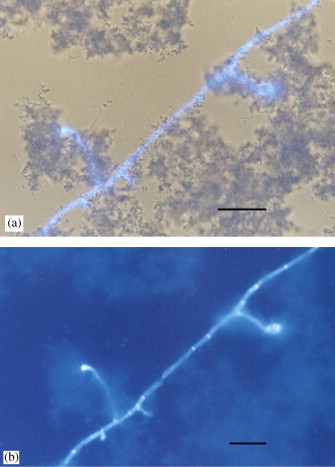
Figure 6. Photomicrographies of deep-sea sediment (5900 m) of the Indian Ocean with hyphae of Aspergillus sydowii and sediment particles. (a) epifluorescence microscopy combined with that of bright field; (b) epifluorescence (Raghukumar et al 2004).
One of the most surprising works, and hard to believe, is that of Kochkina et al (2001), where a lot of fungi of all kinds and bacteria, especially actinobacteria, were isolated from samples of permafrost from Russia, Canada and Antarctica reaching 3 My old. The authors even suggested that there is no limit of years to recover viable microorganisms. This article has had very little echo, and it is not even mentioned by later articles as Raghukumar et al. (2004).
Conclusions
As we have seen, evidence of DNA from no-living yeasts in ancient remains related to winemaking dates back to around 5000 years in ancient Egypt (Cavalieri et al 2003). Regarding other microorganisms, taking into account the natural degradation of DNA over time, it seems that the oldest samples would be about 400,000 years at most, in particular actinobacteria in frozen sediments such as permafrost (Willerslev et al 2003 ). Publications of bacterial DNA recovered from several millions years (up to 600 My) have many scientific concerns about their credibility and reliability (Kennedy et al 1994).
With regard to living yeast as those of 3000 years apparently isolated by Aouizerat et al (2019), it seems that Candida and others were isolated from containers to elaborate chicha about 2800 years old (Gomes et al 2009), although this reference is a review and the original work does not appear to have been published. Other authors (Abyzov et al 2006; Soina et al 2004) also find alive yeasts, without specifying which ones, in Antarctic ice samples of some thousands of years. More surprising are the isolated isolations of yeast and other fungi and bacteria from Greenland ice samples 100,000 years old (Ma et al 1999), as well as those of Aspergillus from the Indian Ocean seabed of about 180,000 years (Raghukumar et to 2004).
Regarding other “resurrected” microorganisms, some of the most reliable are the several Antarctic ice bacteria of some thousands of years (Abyzov et al 2006) and Thermoactinomyces spores of Roman remains 1900 years old (Unsworth et to 1977). Of the oldest, perhaps the anabiosis forms of bacteria conserved in permafrost a million years old (Suzina et al., 2006) would have certain likelihood. Curiously, these bacteria would be non-sporulated but they would have a cyst structure, with multi-layer walls and other intracellular modifications. The other findings of “resurrected” bacteria from more millions of years of amber or halite, just like their DNA and also because of this, are very hard to believe (Hebsgaard et al 2005).
Thinking in the cellular forms of resistance and anabiosis, as the bacterial endospores and the mentioned cysts, it must be remembered that yeasts, like many other fungi, have the ability to produce spores, in particular ascospores as they are Ascomycetes. Although these ascospores have a greater capacity for resistance than vegetative cells in dry conditions or other inhospitable environments and have a persistence in time, apparently there is no work (or I have not been found) related to the recovery of yeasts ascospores from ancient remains.
The work of Aouizerat et al (2019) makes no mention of the yeast spores, neither as a possible explanation of the yeast survival in these ancient remains. In fact, they propose that the microcolonies of yeasts on ceramics pores would have continued to grow minimally during these 3000 years thanks to the humidity and residual nutrients. Well, we do not know, and neither if the yeast ascospores have had any role.
Finally, we can believe the finding of Aouizerat et al (2019) is truth, but obviously further investigation in other similar archaeological samples must be done. This research should be done not only for yeasts, but also for bacteria of other fermented products. Besides considering the sporulated ones, other bacteria should be considered, that could survive thanks to the cell cysts or other forms of anabiosis.
Bibliography
Abyzov SS et al (2006) Super-long anabiosis of ancient microorganisms in ice and terrestrial models for development of methods to search for life on Mars, Europa and other planetary bodies. Adv Space Res 38, 1191-1197
Andam CP et al (2016) Microbial genomics of ancient plagues and outbreaks. Trends Microbiol 24, 978 –990
Aouizerat T et al (2019) Isolation and characterization of live yeast cells from ancient vessels as a tool on bio-archaeology. mBio 10, 2, 1-21
Borschel-Dan A (2019) Israeli scientists brew groundbreaking “ancient beer” from 5,000-year-old yeast. The Times of Israel, 22nd may 2019.
Bos KI et al (2011) A draft genome of Yersinia pestis from victims of the Black Death. Nature 478, 506–510
Cano, R.J. and Borucki, M.K. (1995) Revival and identification of bacterial spores in 25- to 40-million year-old Dominican amber. Science 268, 1060–1064
Cavalieri D et al (2003) Evidence for S. cerevisiae fermentation in ancient wine. J Mol Evol 57:S226-232
Chang CF et al (2012) Candida theae sp. nov., a new anamorphic beverage-associated member of the Lodderomyces clade. Int J Food Microbiol 153, 10-14.
Gomes FCO et al (2009) Traditional foods and beverages from South America: microbial communities and production strategies. Chapter 3 in Industrial Fermentation, ed. J Krause & O Fleischer, Nova Science Publishers.
Hofreiter M et al (2001) Ancient DNA. Nature Rev Genet 2, 353–359.
Kennedy MJ et al (1994) Preservation records of micro-organisms: evidence of the tenacity of life. Microbiology 140, 2513-2529.
Kochkina GA et al (2001) Survival of micromycetes and actinobacteria under conditions of long-term natural cryopreservation. Microbiology 70, 356-364
Lambert LH et al (1998) Staphylococcus succinus sp. nov., isolated from Dominican amber. Int J Syst Bacteriol 48, 511-518
Lowenstein TK et al (2011) Microbial communities in fluid inclusions and long-term survival in halite. GSA Today 21, 4-9
Ma L et al (1999) Revival and characterization of fungi from ancient polar ice. Mycologist 13, 70-73.
Madeja J et al (2009) Bacterial ancient DNA as an indicator of human presence in the past: its correlation with palynological and archaeological data. J Quaternary Sci 24, 317-321.
Maixner F et al. (2016) The 5300-year-old Helicobacter pylori genome of the Iceman. Science 351, 162–165
McGovern PE et al (1986) Neolithic resinated wine. Nature 381:480–481
Mortimer R & M Polsinelli (1999) On the origins of wine yeast. Res Microbiol 150, 199-204
Raghukumar C et al (2004) Buried in time: culturable fungi in a deep-sea sediment core from the Chagos Trench, Indian Ocean. Deep Sea Res Part I: Oceanog Res Papers 51, 1759-1768
Soina VS et al (2004) The structure of resting microbial populations in soil and subsoil permafrost. Astrobiology 4 (3), 345–358.
Suzina et al (2006) The structural bases of long-term anabiosis in non-spore-forming bacteria. Adv Space Res 38, 1209-1219.
Unsworth BA et al (1977) The Longevity of Thermoactinomycete Endospores in Natural Substrates. J Appl Microbiol 42, 45-52
Vreeland RH et al (2000) Isolation of a 250 milion-year-old halotolerant bacterium from a primary salt cristal. Nature 407, 897-900.
Willerslev E et al (2003) Diverse plant and animal DNA from Holocene and Pleistocene sedimentary records. Science 300, 791-795
Willerslev E et al (2004) Long-term persistence of bacterial DNA. Curr Biol 14, PR9-R10.
Plastic-eating bacteria
25th December 2018
Translated from the original article in Catalan.
Plastic ocean
We humans are destroying the planet Earth. Besides climate change (there are still ignorant people who do not believe it), the depletion of natural resources and the massive extinction of animal and plant species, one of the most visual effects is the coverage of the planet with rubbish. Since 71% of the surface is marine, most of the non-degrading waste finishes in the sea. In the oceans there are already large expansions covered by floating debris, especially plastics, called “plastic islands” (Figure 1). In the North Pacific area, where different sea currents come together, the “island” reaches 1500 km of radius, with plastics up to 200 meters deep, and continues to grow. There is more information of it, and also about the environmental consequences, in the Wikipedia article Great Pacific garbage patch.

Figure 1. Small portion of the Great Pacific Garbage Patch (From oceanandreserveconservationalliance.com)
PET plastics
Although there are many types of plastics, one of the most used and most abundant in waste and “plastic islands” is polyethylene terephthalate, known as PET or PETE (Figure 2). It is a type of thermoplastic polymer, vulgarly plastic, which belongs to the so-called polyesters, and is obtained by synthesis from petroleum. It is harmless, very resistant and lightweight and has multiple applications (Figure 3). Counting only bottles of PET for refreshing beverages, 1 million of them per minute are sold in the world. It is a recyclable material (see Pet bottle recycling in Wikipedia) but very resistant to biodegradation. In nature it can last some hundreds of years.

Figure 2. PET, polyethylene terephthalate.
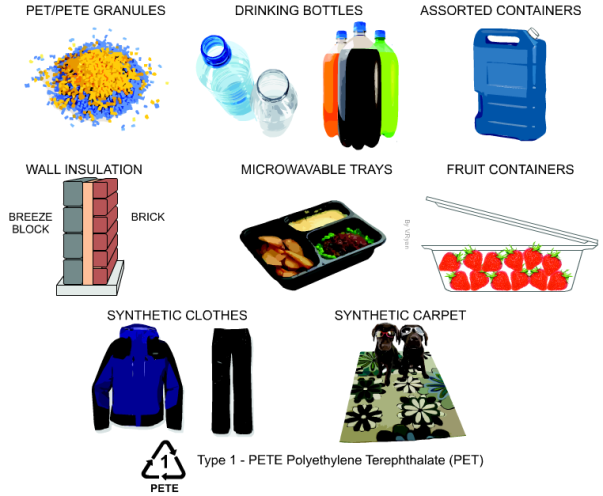
Figure 3. Several applications of PET (From http://www.technologystudent.com).
PET is “eaten” by Ideonella sakaiensis
I. sakaiensis (Figure 4) are bacteria with rod shape, gram-negative, non esporulate aerobic heterotrophic, mobile with a flagellum, and catalase (+) and oxidase (+) (Tanasupawat et al 2016). They grow at neutral pH and are mesophilic, with optimum at 30-37°C. They belong to the phylogenetic group of betaproteobacteria, which include, besides many others, the known Neisseria (gonorrhoea and meningitis) and the nitrifying Nitrosomonas.

Figure 4. Scanning electron microscope images (false colour) of Ideonella sakaiensis cells grown on PET film for 60 h (From Yoshida et al 2016).
The 201-F6 strain, the first of the new species I. sakaiensis, was isolated from a landfill and identified in 2016 by a Japanese group of the Kyoto Institute of Technology that looked for bacteria using plastic as carbon source, from samples of remains of PET bottles (Yoshida et al 2016). They saw that these bacteria adhere to a low-grade PET film and can degrade it, by means of two enzymes characterized by these authors: a PETase and a MHETase, which produce terephthalic acid and ethylene glycol acid (Figure 5), which are benign environmental substances and that the bacteria can be metabolized. A colony of I. sakaiensis completely degraded a low-grade PET bottle in 6 weeks. High-grade PET products need to be heated to weaken them before the bacteria can degrade them. This is the first bacterium found as a PET degrader, and uses it as the only carbon source and energy source. Since PET has existed only for 70 years, these bacteria should have evolved in this short period until being able to degrade PET in a few weeks, instead of hundreds of years in nature (Sampedro 2016).
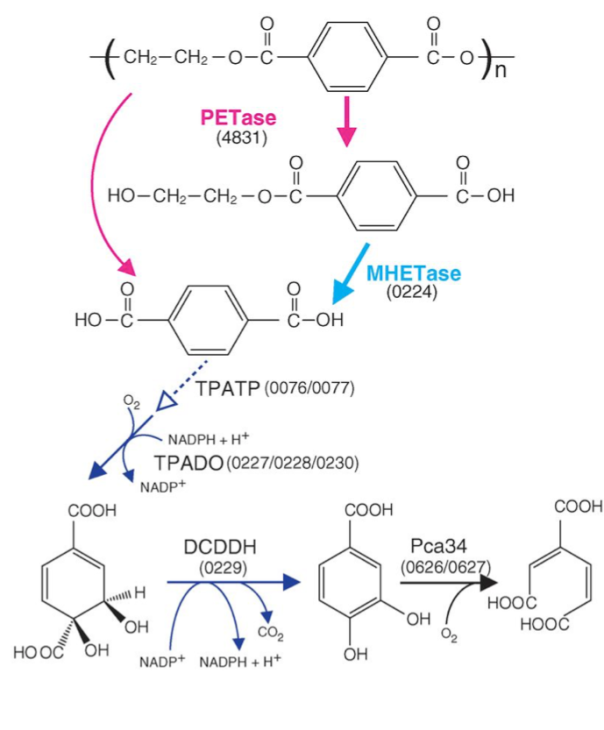
Figure 5. Predicted metabolic pathway of PET degradation by I. sakaiensis: extracellular PETase hydrolyses PET giving monohydroxyethyl terephthalic (MHET) and terephthalic acid (TPA). MHETase hydrolyses MHET to TPA and ethylene glycol (EG). The TPA is incorporated through a specific transporter (TPATP) and is catabolized to cyclohexadiene and this to protocatechuic acid (PCA) by the DCDDH. Finally, the PCA ring is cut by a PCA 3.4 dioxygenase with oxygen, as known for degradation of phenolic compounds and other xenobiotics. The numbers in parentheses are the ORF of the corresponding genes (From Yoshida et al 2016).
Previously, only some tropical microfungi (Fusarium solani) were known to degrade PET, and they also excreted esterases. In this case, Fusarium would be used to modify the polyester fabric, to achieve more hydrophilic and easier to work (Nimchua et al 2008). It is important to remember the structural similarity of synthetic PET fabrics (Figure 3) to those of natural fibre such as cotton, since these contain cutin, which is a polyester, a waxy polymer from the external parts of the plants. Therefore, the enzymes of Fusarium or Ideonella must be relatively similar to those that were already in nature long before the plastics were invented.
Recent genetic improvement of the enzyme PETase of Ideonella sakaiensis
In order to better understand the function and specificity of the PETase, a group of American and British researchers have recently characterized the structure of this enzyme (Austin et al 2018), mainly by high resolution X-ray crystallography, comparing it with a homologous cutinase obtained from actinobacteria Thermobifida fusca. The main differences between the two have been a greater polarization in the surface of the PETase (pI 9.6) than in the cutinase (pI 6.3), and on the other hand (Figure 6), a greater width of the active-site cleft in the case of PETase of I. sakaiensis. The cleft widening would be related with an easy accommodation of aromatic polyesters such as PET.
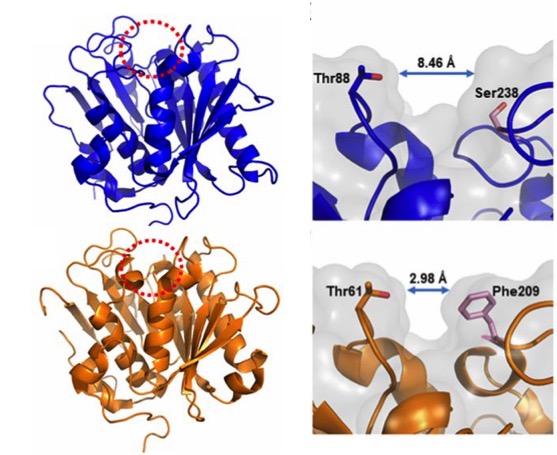
Figure 6. Compared structures (left) of the PETase of I. sakaiensis (above) and the cutinase of actinobacterium Thermobifida fusca (below), obtained by high resolution X-ray crystallography (0.92 Å). The active-site cleft is marked with a red dotted circle. Details (right) of the active site with different cleft widths in the PETase of I. sakaiensis (above) and the cutinase of T. fusca (below) are shown. (From Austin et al 2018).
Hypothesizing that the structure of the active site of the PETase would have resulted from a similar cutinase in an environment with PET, Austin et al (2018) proceeded to make mutations in the PETase active-site to make it more similar to cutinase and obtained a double mutant S238F/W159H which theoretically would make the entry of the active site closer (Figure 6). But their surprise was capital when they saw that the mutant degraded the PET better (an improvement of 20%), with an erosion of the PET film (Figure 7 C) even greater than the original PETase (Figure 7B). The explanation was that mutant changes in amino acid residues favoured PET intake in the active site, despite making a closest cleft (Austin et al 2018).

Figure 7. Scanning electronic microscopy images of a piece of PET without microorganisms (A), after incubating 96 h with PETase of the I. sakaiensis 201-F6 (B), and with PETase of the double-mutant S238F/W159H (C) (From Austin et al 2018).
In addition, these authors have shown that this PETase degrades also other similar semi aromatic polyesters, such as polyethylene-2,5-furonicarboxylate (PEF), and therefore this enzyme can be considered an aromatic polyesterase, but it does not degrade aliphatic ones.
The conclusion of their work is that protein engineering is feasible in order to improve the performance of PETase and that we must continue to deepen in the knowledge of their relationships between structure and activity for the biodegradation of synthetic polyesters (Austin et al 2018).
Other plastic-eating microbes ?
The discovery of I. sakaiensis has been very important for the possibility of establishing a rapid recycling process for PET, but it is not the first organism that has been found as plastic consumer. By the way, we can see the formulas of the main plastics derived from petroleum in Figure 8.
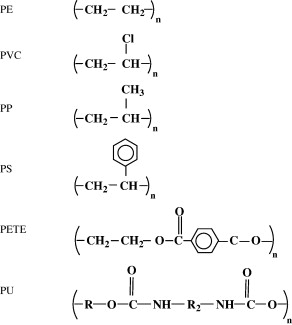
Figure 8. Formulas of the most common petroleum plastics: polyethylene (PE), polyvinyl chloride (PVC), polypropylene (PP), polystyrene (PS), polyethylene terephthalate (PET or PETE) and polyurethane (PU) (From Shah et al 2008).
Reviewing the bibliography, we see that many cases of plastic degrading microorganisms have been described (Shah et al 2008), especially polyethylene, polyurethane and PVC: various Pseudomonas, Rhodococcus and Comamonas among bacteria, and some Penicillium, Fusarium and Aspergillus between fungi.
Among the polyurethane consumers, mushrooms are highlighted (Howard 2002), and especially the plants endophyte Pestalotiopsis microspora, which can use polyurethane as the only source of carbon (Russell et al 2011).
On the other hand, the ability of the mealworms, the larval forma of the darkling beetle Tenebrio molitor, to chew and degrade the polystyrene foam is well known (Yang et al 2015). Fed only with the PS, these larvae degrade it completely in relatively short periods. As expected, the degradation of the PS is carried out by the intestinal bacteria of the animal (Figure 9). It has been demonstrated because degradation stops when administering antibiotics to the larva (Yang et al 2015). One of the isolated bacteria that has been shown to degrade PS is Exiguobacterium, from Bacillales group, but it is not the only one. In fact, when performing studies of metagenomics from gut of larvae eating PS, a large variety of bacteria have been found, and these vary depending on the kind of plastic, since the degradation of polyethylene has also been seen. Some of the bacteria with DNA found as predominant would be the enterobacteria Citrobacter and Kosakonia. It seems that the intestinal microbiota of Tenebrio is modified and adapted to the different ingested plastics (Brandon et al 2018).
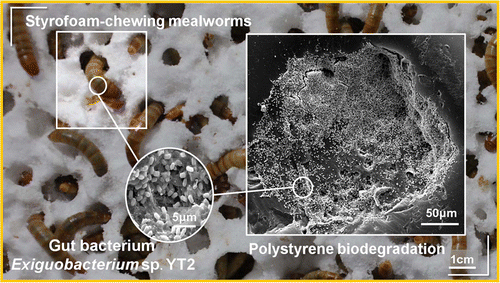
Figure 9. Biodegradation of polystyrene by the intestinal bacteria of Tenebrio, the mealworm (Yang et al 2015).
Finally, as we see the microbial biodegradation of non-biodegradable or recalcitrant plastics should not surprise us, since on the one hand, there are natural “plastics” such as polyhydroxybutyrate or polylactic acid that are easily degradable (Shah et in 2008), and on the other hand the adaptive capacity of the microorganisms to be able to break the most recalcitrant chemical bonds is very large. Microbes evolve rapidly, and acquire better strategies to break the plastics made by humans (Patel 2018). We have seen in this case the degradation of PET, which in less than 70 years some microbes have already found a way to take advantage of it.
The problem is that we are generating too much plastic waste in no time and the microorganisms have not had time yet to degrade them. It is clear that we will have to help our microbial partners, not generating more degrading polymers, and recycling and degrading them, by using these same degrading microbes, among other ways.
Bibliography
Austin HP et al (2018) Characterization and engineering of a plastic-degrading aromatic polyesterase. Proc Nat Acad Sci 115, 19, E4350-E4357
Brandon AM et al (2018) Biodegradation of Polyethylene and Plastic Mixtures in Mealworms (Larvae of Tenebrio molitor) and Effects on the Gut Microbiome. Environ Sci Technol 52, 6526-6533
Griggs MB (2017 april 24) These caterpillars chow down on plastic bags. Popular Science. http://www.popsci.com
Howard GT (2002) Biodegradation of polyurethane: a review. Int Biodeterior Biodegrad 42, 213-220
https://en.wikipedia.org/wiki/Great_Pacific_garbage_patch
https://en.wikipedia.org/wiki/PET_bottle_recycling
https://en.wikipedia.org/wiki/Polyethylene_terephthalate
Patel NV (2018 april 17) Scientists stumbled upon a plastic-eating bacterium – then accidentally made it stronger. Popular Science. http://www.popsci.com
Russell JR et al (2011) Biodegradation of polyester polyurethane by endophytic fungi. Appl Environ Microbiol 77, 17, 6076-6084
Sampedro J (2016 marzo 10) Descubierta una bacteria capaz de comerse un plástico muy común. El País
Shah AA et al (2008) Biological degradation of plastics: a comprehensive review. Biotechnol Adv 26, 246-265
Tanasupawat et al (2016) Ideonella sakaiensissp. nov., isolated from a microbial consortium that degrades poly(ethylene terephtalate). Int J Syst Evol Microbiol 66, 2813-2818
Yang et al (2015) Biodegradation and mineralization of polystyrene by plastic-eating mealworms: Part 2. Role of gut microorganisms. Environ Sci Technol 49, 12087-12093
Yoshida et al (2016) A bacterium that degrades and assimilates poly(ethylene terephthalate). Science 351,1196–1199
Lactic acid bacteria of beers: the bad guys and the good ones
28th October 2018
It is not easy to “live” in the beer
In principle, lactic acid bacteria (LAB) and many other bacteria and generally most microorganisms, do not have it easy to survive in beer or other alcoholic beverages such as wine. This is one of the main reasons why wines and beers have been from ancient times the safest ways to drink hygienically something similar to water and that it was not contaminated, apart from boiled waters, such as tea and other herbal infusions.
The reasons for the difficult survival of microorganisms in beer are ethanol, the pH quite acidic (around 4), the lack of nutrients due to the fact that the yeasts have assimilated them, the little dissolved oxygen, the high concentration of carbon dioxide (0.5% by weight / volume) and the presence of humulone derived compounds (Figure 1) of hops: iso-alpha-acids, up to 50 ppm, which are microbiocides. All these obstacles make it very difficult for any microorganism to thrive. The most susceptible beers of unwanted microbial growth are those where some of the mentioned obstacles are dampened: beers with a higher pH of 4.5, or with little ethanol or little CO2, or with added sugars – which are nutrients -, or with little amount of compounds derived from hops (Vriesekoop et al 2012).

Figure 1. Humulone (left) of the hop is degraded during beer elaboration to isohumulone (right) and other iso-alpha-acids, which are compounds bitter and microbiocides (Wikipedia; Sakamoto & Konings 2003)
The acid pH of the beer (slightly higher than the wine) inhibits many of the best-known pathogens (Figure 2). And the cases we see that could grow at this pH near 4 are inhibited by other factors such as ethanol.
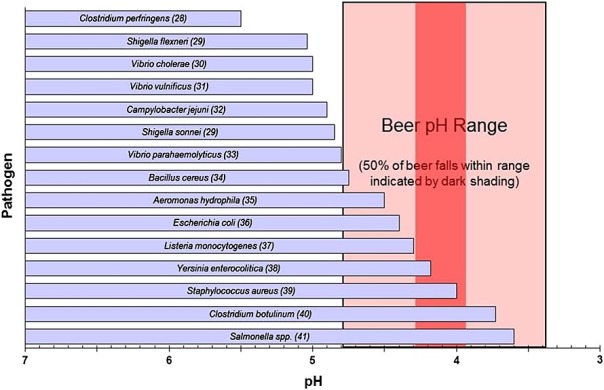
Figure 2. Range of acid pH for the growth of various bacteria, compared to the typical beer pH (Menz et al 2009).
The “bad” lactic acid bacteria of beer
Despite what we have just seen, some bacteria, particularly some LAB, have been able to adapt evolutionarily to the strict beer conditions, and they can survive and spoil them. In particular, the most frequent harmful species against the quality of beers are Lactobacillus brevis and Pediococcus damnosus (Figure 3). The first is the most frequent, and it can give tastes and undesired aromas, as well as turbidity to the final product. P. damnosus has the advantage of growing at low temperatures, and it can also produce undesired aromas, such as diacetyl (Vriesekoop et al 2012). Some Pediococcus and Lactobacillus may adhere to yeast, inducing them to sediment, which delays fermentation (Suzuki 2011).
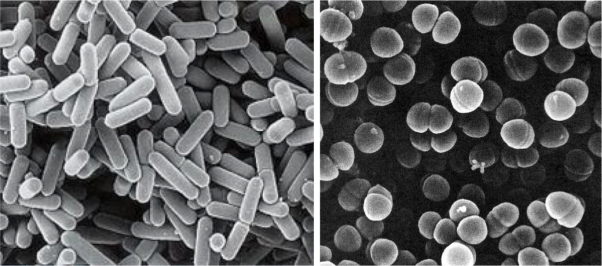
Figure 3. Lactobacillus brevis (left) and Pediococcus damnosus (right) at the electronic scanning microscope.
Some Pediococcus may also be responsible for the appearance of biological amines in some beers, at risk for the consumer. Amines in a certain concentration are toxic, they may be present in some fermented foods such as cheese, cold meat and alcoholic beverages such as wines and beers, and are produced by decarboxylation of amino acids by LAB. The level of tyramine and other amines has been used as a measure of quality in some Belgian beers made with LAB (Loret et al 2005).
Apart from these LAB, other bacteria related to problems of beer contamination are acetic acid bacteria such as Acetobacter, typically associated with oxygen intake in packaging or distribution. Other harmful bacteria are some enterobacteria, such as Shimwellia pseudoproteus or Citrobacter freundii, which proliferate in the early stages of fermentation, and produce butanediol, acetaldehyde and other unwanted aromatic compounds (Vriesekoop et al 2012). Other harmful bacteria for beer, especially when bottled, are Pectinatus and Megasphaera, which are strict anaerobes, of the clostridial family, and can produce hydrogen sulphide and short chain fatty acids, all of them unpleasant (Suzuki 2011 ).
The “good” lactic acid bacteria of beer
LAB are well known for being some of the microbes that most benefits contribute to the food production, on the one hand as an economic means of preserving food, and on the other hand to improve their quality and organoleptic characteristics. That’s why they are the main agents of fermented foods, along with yeasts. We have seen some of the LAB’s food benefits in other posts in this blog: prehistoric cheeses, or breast milk microbiota, and even wine bacteria.
Therefore, LAB also have a good role in the production of beers: in particular, as we will see below, in the production of acidified malt, and in some peculiar styles of beer such as the Belgian Lambic and the Berliner Weissbier.
As you know, malt is the raw material for making beer. The cereal is subjected to the malting process, where cereal grains, mainly barley, are germinated, the enzymes hydrolyse the starch into sugars, and all of this is then heated obtaining the must, the substrate solution which will be fermented by the yeasts ferment, producing ethanol and carbon dioxide.
The acidification of the malt, that is, with a lower pH, has the advantages of activating many important enzymes in malting, giving a lower viscosity to the malt and therefore to the final beer. Although adding mineral acids or commercial lactic acid can achieve acidification, it is often recommended or legislated a biological acidification, which is achieved by adding LAB. The use of LAB starter cultures is a relatively new process and in addition to the commented benefits on the quality of the malt, it has been shown to also inhibit unwanted molds that are a real problem in malting and that can give mycotoxins. The compounds produced by LAB that can inhibit the fungi are the same lactic acid and the consequent pH drop, bacteriocins, hydrogen peroxide, and other compounds not well known as perhaps some peptides (Lowe & Arendt 2004).
The most commonly LAB strains used to acidify malt are Lactobacillus amylolyticus previously isolated from the same malt. These strains are moderately thermophile, resistant to compounds derived from humulone, and they have the advantage of being amylolytic in addition to producing lactic acid, which lowers the pH (Vriersekoop et al 2012).
Beers with LAB participating in the fermentation, such as Lambic and Berliner Weissbier styles, belong to the type of spontaneous fermentation beers. The other types of controlled fermentation beers are the best-known Ale and Lager, both inoculated with specific yeasts. Ale beers are those of high fermentation, where Saccharomyces cerevisiae yeast used tends to remain on the surface and the fermentation temperature is above 15-20ºC. Lager ones are those of low fermentation, originally from Bavaria, where yeast S. pastorianus (S. carlsbergensis) tends to settle at the bottom of the fermenter and the temperature is between 7 and 13ºC.
Belgian Lambic beer
Traditional Belgian beers (in Dutch lambiek or lambik) are known for their sensorial characteristics due to LAB activity. They are traditional in Brussels itself and in the neighbouring region of Pajottenland, in the Zenne river valley, in the Flemish Brabant on the SW of the Belgian capital. One of the villages in this valley is Lembeek, which could be the origin of the name of this beer.
These beers of spontaneous fermentation represent the oldest style of making beer in the developed world, for some centuries. For a few years now (since around 2008), similar beers are made in the USA, called “American coolship ales” (Ray 2014).
Lambic beer is made with barley malt and a minimum of 30% of non-malted wheat. The cones of a special hops, completely dried and aged for 3 years, are added to the must. They are added not for their aroma or bitterness, but rather as antimicrobial, to prevent above all, the growth of gram-positive pathogenic bacteria in the fermentation broth.
Also to avoid these contaminants and to promote the microbiota typical of the Lambic fermentation, these beers are brewed only between October and May, since in summer there are too many harmful microorganisms in the air that could spoil the beer, and it is necessary to lower the temperature after boiling. Boiling of the must is done intensively, with an evaporation of 30%.
After boiling, the broth is left in open deposits, and in this way the microorganisms of the air present in the fermentation rooms of the brewery (usually at the top of the building) are acquired, and of the outside air, since the tradition says that the windows must be left open. It is assumed that the captured microbes are specific to the Zenne Valley. These open deposits are the koelschip in Dutch (coolship in English), like swimming pools (Figure 4). Being well open, with a lot of surface (about 6 x 6 m) and shallow depth (about 50 cm), they favour the collection of microbes from the room and from the outside. Another purpose of this form is the fastest cooling of boiled broth to start fermentation. They can be made of wood, copper, or stainless steel more recently.

Figure 4. Koelschip (in Dutch) or coolship in English, the open deposits, as swimming-pools, where the Lambic beer process begins (Brasserie Cantillon, Brussels).
The “inoculated” broth in this spontaneous way is left only one night in the coolship, and on the following day this must is pumped into fermentation tanks where there will stay a year, during which the sugar content will go down, up to about 30 g/L. Then it is transferred to oak barrels, previously used for sherry or port, and there it can be left for another two years, at temperatures of 15-25ºC. Some barrels are the same used since 100 years ago. The final product is a cloudy beer, with a pale yellow, very little CO2, dry, acidic, with about 6-8º of ethanol. It reminds a bit like the sherry and especially the cider, and with a slightly bitter taste (Jackson 1999).
In this long process of fermentation, up to 3 years, of course there is a diversity in the composition of the microbial population. In a first phase there is a certain predominance of Kloeckera yeasts and especially enterobacteria during the first month. After 2 months, Pediococcus damnosus and Saccharomyces spp. predominate, and alcoholic fermentation begins. After 6 months of fermentation the predominant yeast is Dekkera bruxellensis (Spitaels et al 2014), or what is the same, Brettanomyces (Kumara & Verachtert 1991), of which Dekkera is the sexual form.

Figure 5. Species of isolates in MRS and VRBG agar media, for lactic acid bacteria and enterobacteria respectively, during the process of making a Lambic beer. The number of isolates is given between brackets (Spitaels et al 2014).
We see (Figure 5) as in particular after 2 months the predominant bacterium is the LAB P. damnosus. It was appointed in the first studies as “P. cerevisiae“, but this name was finally not admitted because it included other species. The count of these in MRS is 104UFC per mL until the end of fermentation. Acidification seems to be rapidly taking place in the transition from the first stage to that of maturation, coinciding with the growth of P. damnosus, which produces lactic acid, although Dekkera/Brettanomyces and acetic acid bacteria also contribute to the acidification (Spitaels et to 2014).
In other trials with the American coolship ales (ACA) of Lambic style, Lactobacillus spp. have also been found, and in a metagenomic study (Bukolich et al 2012) of these ACA, DNA of several Lactobacillales has been detected. At the end of the process, a predominance of Pediococcus (Figure 6, panel C) was also observed. In the same figure in panel A we observe how the predominant unicellular fungus is also Dekkera/Brettanomyces.
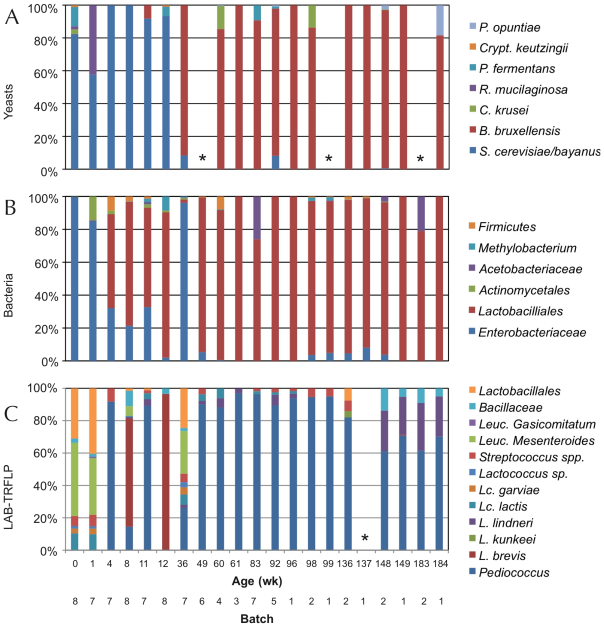
Figure 6. TRFLP analysis (polymorphisms of lengths of PCR-amplified terminal restriction fragments) of total DNA extracted from the fermentation samples of ACA beers (similar to Lambic) during 3 years, using primers for: ITS1/ITS4 of 26S rDNA for yeasts (panel A), 16S rDNA for bacteria (panel B), and specific ones for LAB (panel C). Samples marked with * did not give amplification (Bukolich et al 2012).
Lambic derived beers: Gueuze, Faro, fruity and others
The basic Lambic, which is difficult to purchase, is only found in a few Brussels cafes and the production area. In fact, Lambic is the basis for elaborating the others, much more common to consume:
The Faro is a Lambic sweetened with brown sugar and sometimes with spices.
The fruity Lambic are those that have been added whole fruits or fruit syrup. They can be with bitter cherry (kriek), which are the most traditional, or with raspberry, peach, grapes, strawberry, and sometimes also apple or pineapple or apricot or other.
And finally, the Gueuze, which are sparkling and easy to find. They are made by mixing young Lambics (from 6 months to 1 year) with other more mature ones (2-3 years) in thick glass bottles similar to those of champagne or cava and left for a second fermentation with the remaining sugars from the young Lambic. This would have been begun by a mayor of Lembeek in 1870 that owned a brewery and applied the fermentation techniques in the bottle that had been successful in the Champagne some years before (Cervesa en català 2012). The word Gueuze can have the same etymological origin as gist(yeast in Flemish) and it could also refer to the fact that it produces bubbles of CO2, that is, gas (Jackson 1999). However, another historical version would be that this beer was called “Lambic de chez le gueux” (Welsh from poor people) because the mentioned mayor of Lembeek had similar socialist ideas to those of the “Parti des Gueus” founded by the Calvinists from Flanders in the 16th century to fight against the Spanish empire. And since beer is feminine in French, the gueuxfeminine is gueuze, here it is.
In this refermentation in the bottle the populations of Dekkera/Brettanomycesand LAB are maintained, although other unicellular fungi such as Candida, Hansenula, Pichia or Cryptococcus (Verachtert & Debourg 1999) appear in limited numbers.

Figure 7. Several beer Gueuze and fruity Lambic, mostly Belgian (from www.swanbournecellars.com.au/).
The Berliner Weissbier (Figure 8) is another beer relatively similar to Lambic ones. It is also brewed with an important part of wheat must, it is cloudy, acidic and with 3% ethanol. It is traditional in Berlin and the north of Germany, made from the s. XVI and the most popular alcoholic beverage in Berlin until the end of the s. XIX. It was called the “northern champagne” by the Napoleon’s soldiers. Spontaneous fermentation of must involves a mixture of Dekkera/Brettanomyces, Saccharomycesand hetero-fermentative Lactobacillus.

Figure 8. Berliner Weisse beer (from G-LO, @boozedancing wordpress).
Beers similar to Lambic brewed in Spain
In the same way that the commented American Coolship Ales, Lambic style beers are also made in many other countries and, in the case of Spain, coinciding with the boom of artisanal beers, they are also elaborated, especially the fruity Lambic ones. According to the Birrapedia website, 6 of these are currently being processed, all of which are cherries. Two of them are made in Lleida, one in Barcelona, one in Alicante, one in the Jerte valley, and another in Asturias.
Resistance of lactic acid bacteria from beer to hop compounds
Lactobacillus and Pediococcus, both bad and good we have seen, and other contaminating bacteria of beers, have the ability to withstand hop compounds, which, as we have seen, are natural microbiocides. This resistance can be due to various defence systems, both active and passive (Sakamoto & Konings 2003). The active systems include efflux pumps, such as HorA and HorC, which carry the iso-alpha-acids (Figure 1) out the cell. HorA does it with ATP consumption, and HorC using the proton driving force (Figure 9). The corresponding genes horA and horC were originally found in L. brevis, but later they were also found in L. lindneri, L. paracollinoides and in the best known P. damnosus(Suzuki et al., 2006).
Curiously, HorA shows a resemblance of 54% to OmrA, a membrane transporter of Oenococcus oeni, related to the tolerance of this bacterium from wine to ethanol and other stressors (Bourdineaud et al 2004) (See some more about O. oeni in my post on the bacteria of the vine and the wine). Therefore, it is probable that HorA also has functions of exclusion of other compounds aside from those of the hops. It has been seen that these horAand horC resistance genes and their flanking regions are well preserved and have sequences almost identical to the different species that have them. Therefore, it is very likely that some have been acquired from others by means of horizontal gene transfer, by plasmids or transposons, as is usual in many other bacteria (Suzuki 2011).

Figure 9. Mechanisms of resistance to hop compounds in Lactobacillus brevis (Suzuki 2011).
As we see in Figure 9, protons are pumped out by an ATPase, and the consumption of ATPs is compensated by forming it thanks to the consumption of substrates such as citrate, malate, pyruvate or arginine. Another mechanism of resistance, passive in this case, is the modification of the composition of membrane fatty acids, with the addition of more saturated ones, such as C16:0, which reduces the membrane fluidity and makes it difficult the entrance of the hop compounds. This also reminds us of the changes in membrane of O. oeni related to the resistance to ethanol (Margalef-Català et al 2016). The cell wall also changes its composition in the presence of the hop alpha-iso-acids, increasing the amount of high molecular weight lipoteichoic acid, which would also be a barrier. We also see (Figure 9) how hop compounds can lower the intracellular levels of Mn2+, and then a greater synthesis of Mn-dependent proteins is observed, and a greater capture of Mn2+ from outside. Finally, cells of L. brevis reduce their size when they are in beer (Figure 10), probably in order to decrease the extracellular surface, thus minimizing the effect of external toxic compounds (Suzuki 2011).

Figure 10. Effects of beer adaptation (left) in the size of Lactobacillus brevis cells compared to well grown cells in rich media MRS (right). The bars are 5 mm (Suzuki 2011).
All these mechanisms have been studied in L. brevis strains harmful to beer, but it is assumed that the resistance of beneficial bacteria from Lambic and others would be due to the same mechanisms, since they are of the same bacterial species.
As a conclusion to all said, we see that LAB have outstanding roles as beneficial in various aspects of brewery and malting, despite their most known role of harmful in the processing of the most common beers.
Bibliography
Birrapedia (seen 18 august 2018) Cervezas de tipo Fruit Lambic elaboradas en España. https://birrapedia.com/cervezas/del-tipo-fruit-lambic-elaboradas-en-espana
Bokulich NA et al (2012) Brewhouse resident microbiota are responsible for multi-stage fermentation of American Coolship Ale. PLoS One, 7, e35507
Bourdineaud J et al (2004) A bacterial gene homologous to ABC transporters protect Oenococcus oeni from ethanol and other stress factors in wine. Int J Food Microbiol 92, 1-14.
Cervesa en català (2012) Fitxes de degustació – Timmermans Gueuze Tradition http://cervesaencatala.blogspot.com.es/2012/06/fitxes-de-degustacio-timmermans-gueuze.html
Jackson, Michael (1999) Belgium’s great beers. Beer Hunter Online, July 30, 1999
Kumara HMCS & Verachtert H (1991) Identification of Lambic super attenuating micro-organisms by the use of selective antibiotics. J Inst Brew 97, 181-185
Loret S et al (2005) Levels of biogenic amines as a measure of the quality of the beer fermentation process: data from Belgian samples. Food Chem 89, 519-525
Lowe DP & Arendt EK (2004) The use and effects of lactic acid bacteria in malting and brewing with their relationships to antifungal activity, mycotoxins and gushing: a review. J Inst Brew 110, 163-180
Margalef-Català et al (2016) Protective role of glutathione addition against wine-related stress in Oenococcus oeni. Food Res Int 90, 8-15
Menz G et al (2009) Pathogens in beer, in Beer in Health and Disease Prevention, (Preedy, V. R. Ed.), 403–413, Academic Press, Amsterdam
Ray AL (2014) Coolships rising: the next frontier of sour beers in the U.S. First we feast 27 feb 2014
Sakamoto K & Konings WN (2003) Beer spoilage bacteria and hop resistance. Int J Food Microbiol 89, 105-124
Spitaels F et al (2014) The microbial diversity of traditional spontaneously fermented lambic beer. PLOS One 9, 4, e95384
Suzuki K et al (2006) A review of hop resistance in beer spoilage lactic acid bacteria. J Inst Brew 112, 173-191
Suzuki K (2011) 125th Anniversary Review: microbiological instability of beer caused by spoilage bacteria. J Inst Brew 117, 131-155
The Beer Wench (2008) My obsession with wild beers. Nov. 20, 2008 https://thecolumbuswench.wordpress.com/tag/lambic/
Verachtert H & Debourg A (1999) The production of gueuze and related refreshing acid beers. Cerevisia, 20, 37–41
Vriesekoop F et al (2012) 125th Anniversary review: Bacteria in brewing: the good, the bad and the ugly. J Inst Brew 118, 335-345
Bacillus as probiotics
12th August 2017
The probiotics
Probiotics are living microorganisms that, when ingested in adequate amounts, can have a positive effect on the health of guests (FAO / WHO 2006; World Gastroenterology Organization 2011, Fontana et al., 2013). Guests can be humans but also other animals. Lactic acid bacteria, especially the genus Lactobacillus and Bifidobacterium, both considered as GRAS (Generally recognized as safe), are the microbes most commonly used as probiotics, but other bacteria and some yeasts can also be useful. Apart from being able to be administered as medications, probiotics are commonly consumed for millennia as part of fermented foods, such as yoghurt and other dairy products (see my article “European cheese from 7400 years ago..” “December 26th, 2012). As medications, probiotics are generally sold without prescription, over-the-counter (OTC) in pharmacies.
I have already commented on the other posts of this blog the relevance of probiotics (“A new probiotic modulates microbiota against hepatocellular carcinoma” August 24th, 2016), as well as the microbiota that coexists with our body (“Bacteria in the gut controlling what we eat” October 12th, 2014; “The good bacteria of breast milk” February 3rd, 2013) and other animals (“Human skin microbiota … and our dog” December 25th, 2015; “The herbivore giant panda …. and its carnivore microbiota” September 30th, 2015).
Besides lactic acid bacteria and bifidobacteria, other microorganisms that are also used to a certain extent as probiotics are the yeast Saccharomyces cerevisiae, some strains of Escherichia coli, and some Bacillus, as we will see. Some clostridia are also used, related to what I commented in a previous post of this blog by March 21st, 2015 (“We have good clostridia in the gut ...”).
The Bacillus
In fact, Bacillus and clostridia have in common the ability to form endospores. And both groups are gram-positive bacteria, within the taxonomic phylum Firmicutes (Figure 1), which also includes lactic acid bacteria. However, bacilli (Bacillus and similar ones, but also Staphylococcus and Listeria) are more evolutionarily closer to lactobacillalles (lactic acid bacteria) than to clostridia ones. The main physiological difference between Clostridium and Bacillus is that the first are strict anaerobes while Bacillus are aerobic or facultative anaerobic.

Figure 1. Phylogenetic tree diagram of Gram-positive bacteria (Firmicutes and Actinobacteria). Own elaboration.
Bacterial endospores (Figure 2) are the most resistant biological structures, as they survive extreme harsh environments, such as UV and gamma radiation, dryness, lysozyme, high temperatures (they are the reference for thermal sterilization calculations), lack of nutrients and chemical disinfectants. They are found in the soil and in the water, where they can survive for very long periods of time.
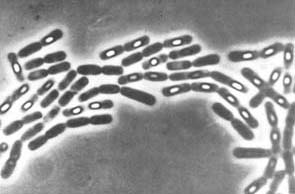
Figure 2. Endospores (white parts) of Bacillus subtilis in formation (Image of Simon Cutting).
Bacillus in fermented foods, especially Asian
Several Bacillus are classically involved in food fermentation processes, especially due to their protease production capacity. During fermentation, this contributes to nutritional enrichment with amino acids resulting from enzymatic proteolysis.
Some of these foods are fermented rice flour noodles, typical of Thailand and Burma (nowadays officially Myanmar). It has been seen that a variety of microorganisms (lactic acid bacteria, yeasts and other fungi) are involved in this fermentation, but also aerobic bacteria such as B. subtilis. It has been found that their proteolytic activity digests and eliminates protein rice substrates that are allergenic, such as azocasein, and therefore they have a beneficial activity for the health of consumers (Phromraksa et al. 2009).
However, the best-known fermented foods with Bacillus are the alkaline fermented soybeans. As you know, soy (Glycine max) or soya beans are one of the most historically consumed nourishing vegetables, especially in Asian countries. From they are obtained “soy milk”, soybean meal, soybean oil, soybean concentrate, soy yogurt, tofu (soaked milk), and fermented products such as soy sauce, tempeh, miso and other ones. Most of them are made with the mushroom Rhizopus, whose growth is favoured by acidification or by direct inoculation of this fungus. On the other hand, if soy beans are left to ferment only with water, the predominant natural microbes fermenting soy are Bacillus, and in this way, among other things, the Korean “chongkukjang” is obtained, “Kinema” in India, the “thua nao” in northern Taiwan, the Chinese “douchi”, the “chine pepoke” from Burma, and the best known, the Japanese “natto” (Figure 3). Spontaneous fermentation with Bacillus gives ammonium as a by-product, and therefore is alkaline, which gives a smell not very good to many of these products. Nevertheless, natto is made with a selected strain of B. subtilis that gives a smoother and more pleasant smell (Chukeatirote 2015).
These foods are good from the nutritional point of view as they contain proteins, fibre, vitamins, and they are of vegetable or microbial origin. In addition, the advertising of the commercial natto emphasizes, besides being handmade and sold fresh (not frozen), its probiotic qualities, saying that B. subtilis (Figure 4) promotes health in gastrointestinal, immunologic, cardiovascular and osseous systems (www.nyrture.com). They say the taste and texture of natto are exquisite. It is eaten with rice or other ingredients and sauces, and also in the maki sushi. We must try it !
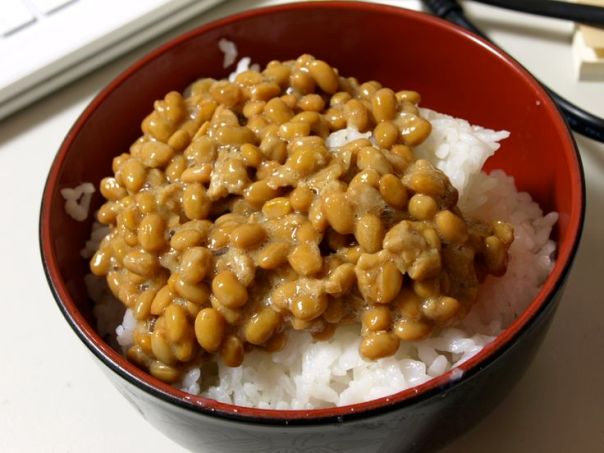
Figure 3. “Natto”, soybeans fermented with B. subtilis, in a typical Japanese breakfast with rice (Pinterest.com).
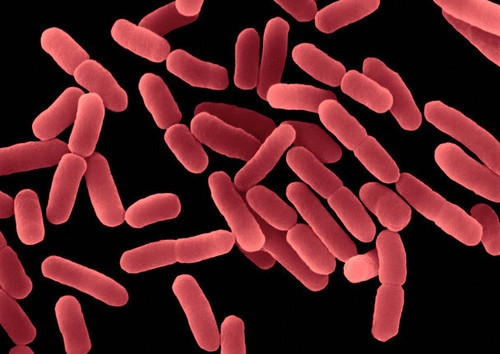
Figure 4. Coloured electronic micrograph of Bacillus subtilis (Nyrture.com).
Bacillus as probiotics
The endospores are the main advantage of Bacillus being used as probiotics, thanks to their thermal stability and to survive in the gastric conditions (Cutting 2011). Although Clostridium has also this advantage, its strict anaerobic condition makes its manipulation more complex, and moreover, for the “bad reputation” of this genus due to some well-known toxic species.
Unlike other probiotics such as Lactobacillus or Bifidobacterium, Bacillus endospores can be stored indefinitely without water. The commercial products are administered in doses of 10^9 spores per gram or per ml.
There are more and more commercial products of probiotics containing Bacillus, both for human consumption (Table 1) and for veterinary use (Table 2). In addition, there are also five specific products for aquaculture with several Bacillus, and also shrimp farms are often using products of human consumption (Cutting 2011).
For use in aquaculture, probiotic products of mixtures of Bacillus (B. thuringiensis, B. megaterium, B. polymixa, B. licheniformis and B. subtilis) have been obtained by isolating them from the bowel of the prawn Penaeus monodon infected with vibriosis. They have been selected based on nutrient biodegradation and the inhibitory capacity against the pathogen Vibrio harveyi (Vaseeharan & Ramasamy 2003). They are prepared freeze-dried or microencapsulated in sodium alginate, and it has been shown to significantly improve the growth and survival of shrimp (Nimrat et al., 2012).
As we see for human consumption products, almost half of the brands (10 of 25) are made in Vietnam. The use of probiotic Bacillus in this country is more developed than in any other, but the reasons are not clear. Curiously, as in other countries in Southeast Asia, there is no concept of dietary supplements and probiotics such as Bacillus are only sold as medications approved by the Ministry of Health. They are prescribed for rotavirus infection (childhood diarrhoea) or immune stimulation against poisoning, or are very commonly used as a therapy against enteric infections. However, it is not clear that clinical trials have been carried out, and they are easy-to-buy products (Cutting 2011).
Table 1. Commercial products of probiotics with Bacillus, for human consumption (modified from Cutting 2011).
| Product | Country where it is made | Species of Bacillus |
| Bactisubtil ® | France | B. cereus |
| Bibactyl ® | Vietnam | B. subtilis |
| Bidisubtilis ® | Vietnam | B. cereus |
| Bio-Acimin ® | Vietnam | B. cereus and 2 other |
| Biobaby ® | Vietnam | B. subtilis and 2 other |
| Bio-Kult ® | United Kingdom | B. subtilis and 13 other |
| Biosporin ® | Ukraine | B. subtilis + B. licheniformis |
| Biosubtyl ® | Vietnam | B. cereus |
| Biosubtyl DL ® | Vietnam | B. subtilis and 1 other |
| Biosubtyl I and II ® | Vietnam | B. pumilus |
| Biovicerin ® | Brazil | B. cereus |
| Bispan ® | South Korea | B. polyfermenticus |
| Domuvar ® | Italy | B. clausii |
| Enterogermina ® | Italy | B. clausii |
| Flora-Balance ® | United States | B. laterosporus * |
| Ildong Biovita ® | Vietnam | B. subtilis and 2 other |
| Lactipan Plus ® | Italy | B. subtilis * |
| Lactospore ® | United States | B. coagulans * |
| Medilac-Vita ® | China | B. subtilis |
| Nature’s First Food ® | United States | 42 strains, including 4 B. |
| Neolactoflorene ® | Italy | B. coagulans * and 2 other |
| Pastylbio ® | Vietnam | B. subtilis |
| Primal Defense ® | United States | B. subtilis |
| Subtyl ® | Vietnam | B. cereus |
| Sustenex ® | United States | B. coagulans |
* Some labelled as Lactobacillus or other bacteria are really Bacillus
Table 2. Commercial products of probiotics with Bacillus, for veterinary use (modified from Cutting 2011).
| Product | Animal | Country where it is made | Species of Bacillus |
| AlCare ® | Swine | Australia | B. licheniformis |
| BioGrow ® | Poultry, calves and swine | United Kingdom | B. licheniformis and B. subtilis |
| BioPlus 2B ® | Piglets, chickens, turkeys | Denmark | B. licheniformis and B. subtilis |
| Esporafeed Plus ® | Swine | Spain | B. cereus |
| Lactopure ® | Poultry, calves and swine | India | B. coagulans * |
| Neoferm BS 10 ® | Poultry, calves and swine | France | B. clausii |
| Toyocerin ® | Poultry, calves, rabbits and swine | Japan | B. cereus |
The Bacillus species that we see in these Tables are those that really are found, once the identification is made, since many of these products are poorly labelled as Bacillus subtilis or even as Lactobacillus (Green et al. 1999; Hoa et al. 2000). These labelling errors can be troubling for the consumer, and especially for security issues, since some of the strains found are Bacillus cereus, which has been shown to be related with gastrointestinal infections, since some of them produce enterotoxins (Granum & Lund 1997; Hong et al. 2005)
The probiotic Bacillus have been isolated from various origins. For example, some B. subtilis have been isolated from the aforementioned Korean chongkukjang, which have good characteristics of resistance to the gastrointestinal tract (GI) conditions and they have antimicrobial activity against Listeria, Staphylococcus, Escherichia and even against B. cereus (Lee et al. 2017).
One of the more known probiotics pharmaceuticals is Enterogermina ® (Figure 5), with B. subtilis spores, which is recommended for the treatment of intestinal disorders associated with microbial alterations (Mazza 1994).

Figure 5. Enterogermina ® with spores of Bacillus subtilis (Cutting 2011)
Bacillus in the gastrointestinal tract: can they survive there ?
It has been discussed whether administered spores can germinate in the GI tract. Working with mice, Casula & Cutting (2002) have used modified B. subtilis, with a chimeric gene ftsH-lacZ, which is expressed only in vegetative cells, which can be detected by RT-PCR up to only 100 bacteria. In this way they have seen that the spores germinate in significant numbers in the jejunum and in the ileum. That is, spores could colonize the small intestine, albeit temporarily.
Similarly, Duc et al. (2004) have concluded that B. subtilis spores can germinate in the gut because after the oral treatment of mice, in the faeces are excreted more spores that the swallowed ones, a sign that they have been able to proliferate. They have also detected, through RT-PCR, mRNA of vegetative bacilli after spore administration, and in addition, it has been observed that the mouse generates an IgG response against bacterial vegetative cells. That is, spores would not be only temporary stagers, but they would germinate into vegetative cells, which would have an active interaction with the host cells or the microbiota, increasing the probiotic effect.
With all this, perhaps it would be necessary to consider many Bacillus as not allochthonous of the GI tract, but as bacteria with a bimodal growth and sporulation life cycle, both in the environment and in the GI tract of many animals (Hong et al. 2005).
Regarding the normal presence of Bacillus in the intestine, when the different microorganisms inhabiting the human GI tract are studied for metagenomic DNA analysis of the microbiota, the genus Bacillus does not appear (Xiao et al., 2015). As we can see (Figure 6), the most common are Bacteroides and Clostridium, followed by various enterobacteria and others, including bifidobacteria.
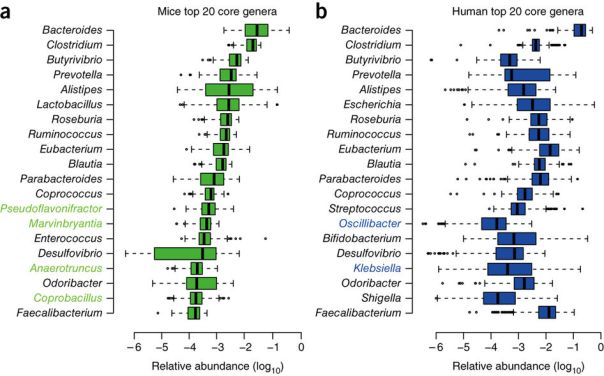
Figure 6. The 20 bacterial genera more abundant in the mice (left) and human (right) GI tract (Xiao et al. 2015).
In spite of this, several species of Bacillus have been isolated from the GI tract of chickens, treating faecal samples with heat and ethanol to select only the spores, followed by aerobic incubation (Barbosa et al. 2005). More specifically, the presence of B. subtilis in the human microbiota has been confirmed by selective isolation from biopsies of ileum and also from faecal samples (Hong et al. 2009). These strains of B. subtilis exhibited great diversity and had the ability to form biofilms, to sporulate in anaerobiosis and to secrete antimicrobials, thereby confirming the adaptation of these bacteria to the intestine. In this way, these bacteria can be considered intestinal commensals, and not only soil bacteria.
Security of Bacillus as probiotics
The oral consumption of important amounts of viable microorganisms that are not very usual in the GI treatment raises additional doubts about safety. Even more in the use of species that do not have a history of safe use in foods, as is the case of sporulated bacteria. Even normal bowel residents may sometimes act as opportunistic pathogens (Sanders et al. 2003).
With the exception of B. anthracis and B. cereus, the various species of Bacillus are generally not considered pathogenic. Of course, Bacillus spores are commonly consumed inadvertently with foods and in some fermented ones. Although Bacillus are recognized as GRAS for the production of enzymes, so far the FDA has not guaranteed the status of GRAS for any sporulated bacteria with application as a probiotic, neither Bacillus nor Clostridium. While Lactobacillus and Bifidobacterium have been the subject of numerous and rigorous tests of chronic and acute non-toxicity, and a lot of experts have reviewed data and have concluded that they are safe as probiotics, there is no toxicity data published on Bacillus in relation to their use as probiotics. When reviewing articles on Medline with the term “probiotic” and limited to clinical studies, 123 references appear, but Bacillus does not appear in any of them (Sanders et al. 2003).
Instead, there are some clinical studies where Bacillus strains have been detected as toxigenic. All this explains that some probiotic Bacillus producers refer to them with the misleading name of Lactobacillus sporogenes, a non-existent species, as can be seen from NCBI (https://www.ncbi.nlm.nih.gov/taxonomy/?term = Lactobacillus + sporogenes).
Finally, we should remember the joint report on probiotics of FAO (United Nations Food and Agriculture Organization) and WHO (World Health Organization) (FAO / WHO 2006), which suggests a set of Guidelines for a product to be used as a probiotic, alone or in the form of a new food supplement. These recommendations are:
- The microorganism should be well characterized at the species level, using phenotypic and genotypic methods (e.g. 16S rRNA).
- The strain in question should be deposited in an internationally recognized culture collection.
- To evaluate the strain in vitro to determine the absence of virulence factors: it should not be cytotoxic neither invades epithelial cells, and not produce enterotoxins or haemolysins or lecithinases.
- Determination of its antimicrobial activity, and the resistance profile, including the absence of resistance genes and the inability to transfer resistance factors.
- Preclinical evaluation of its safety in animal models.
- Confirmation in animals demonstrating its effectiveness.
- Human evaluation (Phase I) of its safety.
- Human evaluation (Phase II) of its effectiveness (if it does the expected effect) and efficiency (with minimal resources and minimum time).
- Correct labelling of the product, including genus and species, precise dosage and conservation conditions.

Conclusions
The use of Bacillus as probiotics, especially in the form of dietary supplements, is increasing very rapidly. More and more scientific studies show their benefits, such as immune stimulation, antimicrobial activities and exclusive competition. Their main advantage is that they can be produced easily and that the final product, the spores, is very stable, which can easily be incorporated into daily food. In addition, there are studies that suggest that these bacteria may multiply in GI treatment and may be considered as temporary stagers (Cutting 2011).
On the other hand, it is necessary to ask for greater rigor in the selection and control of the Bacillus used, since some, if not well identified, could be cause of intestinal disorders. In any case, since the number of products sold as probiotics that contain the sporulated Bacillus is increasing a lot, one must not assume that all are safe and they must be evaluated on a case-by-case basis (Hong et al. 2005).
Bibliography
Barbosa TM, Serra CR, La Ragione RM, Woodward MJ, Henriques AO (2005) Screening for Bacillus isolates in the broiler gastrointestinal tract. Appl Environ Microbiol 71, 968-978.
Casula G, Cutting SM (2002) Bacillus probiotics: Spore germination in the gastrointestinal tract. Appl Environ Microbiol 68, 2344-2352.
Chukeatirote E (2015) Thua nao: Thai fermented soybean. J Ethnic Foods 2, 115-118.
Cutting SM (2011) Bacillus probiotics. Food Microbiol 28, 214-220.
Duc LH, Hong HA, Barbosa TM, Henriques AO, Cutting SM (2004) Characterization of Bacillus probiotics available for human use. Appl Environ Microbiol 70, 2161-2171.
FAO/WHO (2006) Probiotics in food. Health and nutritional properties and guidelines for evaluation. Fao Food and Nutrition Paper 85. Reports of Joint FAO/WHO expert consultations.
Fontana L, Bermudez-Brito M, Plaza-Diaz J, Muñoz-Quezada S, Gil A (2013) Sources, isolation, characterization and evaluation of probiotics. Brit J Nutrition 109, S35-S50.
Granum, P. E., T. Lund (1997) Bacillus cereus and its food poisoning toxins. FEMS Microbiol. Lett. 157:223–228.
Green, D. H., P. R. Wakeley, A. Page, A. Barnes, L. Baccigalupi, E. Ricca, S. M. Cutting (1999) Characterization of two Bacillus probiotics. Appl Environ Microbiol 65, 4288–4291.
Hoa, N. T., L. Baccigalupi, A. Huxham, A. Smertenko, P. H. Van, S. Ammendola, E. Ricca, A. S. Cutting (2000) Characterization of Bacillus species used for oral bacteriotherapy and bacterioprophylaxis of gastrointestinal disorders. Appl Environ Microbiol 66, 5241–5247.
Hong HA, Dic LH, Cutting SM (2005) The use of bacterial spore formers as probiotics. FEMS Microbiol Rev 29, 813-835.
Hong HA, Khaneja R, Tam NMK, Cazzato A, Tan S, Urdaci M, Brisson A, Gasbarrini A, Barnes I, Cutting SM (2009) Bacillus subtilis isolated from the human gastrointestinal tract. Res Microbiol 160, 134-143.
Lee S, Lee J, Jin YI, Jeong JC, Hyuk YH, Lee Y, Jeong Y, Kim M (2017) Probiotic characteristics of Bacillus strains isolated from Korean traditional soy sauce. LWT – Food Sci Technol 79, 518-524.
Mazza P (1994) The use of Bacillus subtilis as an antidiarrhoeal microorganism. Boll Chim. Farm. 133, 3-18.
Nimrat S, Suksawat S, Boonthai T, Vuthiphandchai V (2012) Potential Bacillus probiotics enhance bacterial numbers, water quality and growth during early development of white shrimp (Litopenaeus vannamei). Veterinary Microbiol 159, 443-450.
Phromraksa P, Nagano H, Kanamaru Y, Izumi H, Yamada C, Khamboonruang C (2009) Characterization of Bacillus subtilis isolated from Asian fermented foods. Food Sci Technol Res 15, 659-666.
Sanders ME, Morelli L, Tompkins TA (2003) Sporeformers as human probiotics: Bacillus, Sporolactobacillus, and Brevibacillus. Compr Rev Food Sci Food Safety 2, 101-110
Vaseeharan, B., P. Ramasamy (2003) Control of pathogenic Vibrio spp. by Bacillus subtilis BT23, a possible probiotic treatment for black tiger shrimp Penaeus monodon. Lett Appl Microbiol 36, 83–87
World Gastroenterology Organisation Global Guidelines (2011) Probiotics and Prebiotics.
Xiao et al. (2015) A catalogue of the mouse gut metagenome. Nature Biotechnol 33, 1103-1108.
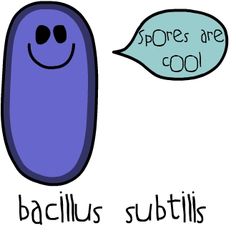
The effect of rapid climate change in the Arctic ecosystem
March 20th, 2016
The Arctic Ocean
Interestingly and coincidentally, “Arctic” comes from the Greek word αρκτος -arctos-, which means “bear” and is a reference to the constellation Ursa Minor, where is the North Star, which indicates the geographic North Pole .
The Arctic constitutes a unique ecosystem of the Earth, consisting of a large ice field, or ice-covered ocean, sometimes regarded as the northern part of the Atlantic Ocean, and it is surrounded by land, which is permafrost, with complete absence of trees. Life in the Arctic consists of organisms adapted to ice, including zooplankton and phytoplankton, fish, marine mammals, birds, land animals, plants and human societies fully adapted to the extreme conditions of the environment.
Due to global warming, isotherms are moving northward at a rate exceeding 50 km per decade over the past 30 years, so if we define the Arctic from a defined temperature or the tree line, its size is diminishing, being the reduction of sea ice the most visible effect.
Anthropogenic climate change: global warming, especially in the Arctic
Yes: climate change is here and it is generated by human activities, that is, it is anthropogenic. Previously there have been on Earth fluctuations in global temperature caused by natural phenomena, usually long-term and cyclical variations. For example, glaciations since about 2 million years are repeated every 100,000 years, and last ice age ended 15,000 years ago. So we are living now in an interglacial period and the next ice age could become not before 50,000 years. The cause of this cycle of glaciations seems to be orbital variations of the Earth, resulting in a lower insolation in high latitudes of the northern hemisphere during glacial periods.
Solar activity, like other stars, has cycles and roughly every 600 years there are periods of little activity (absence of very few solar spots and auroras), with lower energy output, which corresponds to cold periods in the Earth’s climate. The last minimal was in the period 1645-1715, and therefore from the middle of the eighteenth century we enjoy a maximum solar activity, with small cycles of minimum and maximum every 11 years.
Discounting these natural variations, it is clear that throughout the 20th century and especially since the 1960s there has been a steady increase in global average temperature (Figure 1), reaching almost 1ºC more than the beginning of the 20th century. In the early years of the current century the trend is worsening. The last 10 years have been the warmest since there are records, and the forecast is to continue increasing. Most experts agree that humans exert a direct impact on the heating process known as the greenhouse effect. The causes of this effect are some of gaseous components of the atmosphere, especially CO2, which has grown in parallel with rising temperatures, from about 300 ppm at the beginning of 20th century to nearly 400 ppm today. This CO2 and other gases as water vapour, methane and other exclusively anthropogenic absorb radiation and the result is that the atmosphere warms further.

Figure 1. Increase in average global temperature compared to the beginning of 20th century (from GISTEMP).
This global warming is particularly evident in the Arctic. The temperature increases are higher in northern latitudes, especially 60-70º N, where this past December 2015 (Figure 2) have raised to 9ºC above average in large areas of North America and Eurasia. This is called Polar Warming Amplification (PWA). The cause of this overheating in the Arctic respect of the rest of Earth is partly due to the loss of snow and ice (retroactive effect) because the largest area of land and water absorbs more solar energy than white ice (albedo effect), but also the PWA is partly due to the dynamic atmospheric transport, which transports heat energy from the clouds and subtropical regions to the north (Taylor et al 2013).

Figure 2. Thermal anomaly registered in December 2015 with respect to the average 1951-1980 (from GISTEMP).
Besides the consequences of this warming on the Arctic ice that we will comment below, another serious problem is the melting of permafrost, since then methane gas trapped under the frozen ground is released. This way, vast quantities of methane are released, and this greenhouse gas is contributing further to accelerate the global warming.
Less and less ice in the Arctic
Linear trends of sea ice extent and sea ice in the Arctic from 1979 to date are negative year after year, for any month is considered, but it is more clear by comparing Septembers, at the end of the summer when the ice is melting (Figure 3). Of the approximately 7 million km2 minimum in September (the maximum in March is about 16 million), about 100,000 km2 are melt per year, almost 9% every 10 years (Serreze et al 2007), so that there is now almost half ice than in 1979 (Figure 4).

Figure 3. Comparison of the extent of sea ice (in red): September 1979 and 2012 (from The Cryosphere Today).

Figure 4. Average monthly extension of Arctic sea ice since 1979 (Reeves et al 2013).
In addition to the reduction in surface ice, keep in mind the reduction in volume, representing now a third of what it was in September 1979.
There is a big difference between the different models for predicting the disappearance of Arctic sea ice. Half of them expect the total disappearance by September 2100. Predictions move since September 2040 the less optimistic until well past 2100 for the other (Serreze et al 2007).
Other problems resulting from the disappearance of sea ice are the ship traffic, which could shorten distances trips between the ports of northern countries, and on the other hand the exploitation of oilfields and other fossil fuels and minerals, since there is a large part of global reserves in the Arctic (Figure 5).
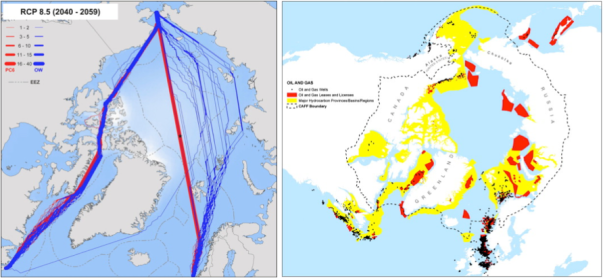
Figure 5. Left: forecast paths for open sea ships (blue) and for icebreakers (red) for 2040-2059. Right: Distribution of the potential major reserves of oil and gas (yellow) and licenses (red) and wells in operation or to operate (black). The dashed line indicates the limit of Conservation of Arctic Flora and Fauna (CAFF) declared by the Working Group of the Arctic Council (www.arctic-council.org). Figures from Reeves et al (2013).
Ecological consequences of the disappearance of the Arctic ice pack
There are many living beings linked to the ice. The polar bears roam on the Arctic ice, so we are feared for his fate. Many fish, seals and crustaceans (krill) form a food chain that starts from the algae that grow under the ice in a very consistent environment, rich in nutrients, especially favourable for marine life (Figure 6 A). Moreover, floating sea ice in summer is a good corridor for dispersion of terrestrial vertebrates (for instance arctic foxes) and plants.
The gradual disappearance of sea ice and warming in the Arctic coast involves a series of ecological imbalances (Figure 6 B). We see for example how walruses forced to remain grouped on the ground are more predisposed to disease transmission. The loss of sea ice diminishes dispersion by ice corridors and then the land populations are most isolated, thus gene flow is restricted. Polar bears and other predators that hunt on the sea ice have it much harder and their populations are at risk. Phytoplankton productivity decreases significantly, thereby reducing zooplankton, and then the whole food chain (fish, seals, etc.) is affected (Post et al 2013).

Figure 6. Ecological interactions influenced by sea ice. A: The distribution and seasonality of sea ice affects the abundance, distribution and interactions of the entire ecosystem in balance. B: The longest period without ice and less sea ice extent have disastrous consequences on the balance of the ecosystem (Post et al 2013).
The polar bear tries to survive
The polar bear (Ursus maritimus) is considered an endangered animal. There are only about 25,000 worldwide. The impact of climate change affects the exclusive habitat of polar regions and forecasts suggest that in a few years from now the ice of the Arctic will melt permanently and polar bears may become extinct because of warming area.
The polar bear is basically carnivorous, unlike others such as brown bears, and remains above the ice hunting seals. With the gradual disappearance of the ice it has more trouble finding preys, and some have begun to learn how to catch salmon rivers, as we see in the images (Figure 7).


Figure 7. White Bear dedicated to fishing salmons in order to survive (www.youtube.com/watch?v=9m_Q9Ojbcmw).
We have also seen groups of polar bears at sea fishing (see video) and dive emerging alternately as if they were dolphins or porpoises. Despite these small adaptations, the food is very low and it is clear that their populations are declining rapidly.
Orcas thrive north
The disappearance of the northern ice is a dramatic ecological change that is causing the disappearance of some species like the polar bear, but interestingly these imbalances benefit some other emerging species. This is the case of the killer whale (Orcinus orca), which is thriving more and more to the north (Figure 8).


Figure 8. Places (marked with numbers) of the Canadian Arctic where groups of orcas were repeatedly photographed between 2004 and 2009 (Young et al 2011).
Eskimo Inuit people live around the American Arctic (from Quebec to Alaska including Hudson Bay and adjacent islands) and the west coast of Greenland, and they are the first witnesses since the mid-twentieth century observing whales in their waters, unknown before. Moreover, in recent years scientists have made numerous orca’ sightings, they have been photographed individually (Young et al 2011), and their travels have been followed through bioacoustics (Ferguson et al 2010) and other techniques.
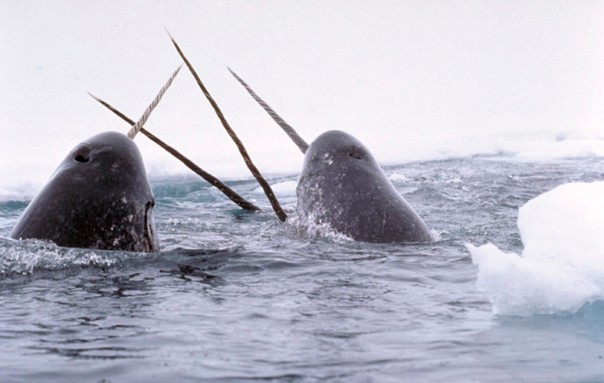

Figure 9. (Top): Narwhals with the characteristic great tusk, which gave rise to the myth of the unicorn. (Low): Group of orcas attacking narwhals cornered on the beach. Watch the video of PBS Nature.
For some years attacks by orcas on narwhals (as in Figure 9) have been observed repeatedly by Inuit Eskimos and studied in detail by several scientists. Laidre et al (2006) observed that before approaching whales, the narwhals tend to group, are more quiet and swim closer to the beach in shallow waters. During the attack, the narwhals disperse significantly but nevertheless mortality is very high. After predation, which can last several hours, oily stains are observed in sea surface, which come from fat of depredated narwhals (Figure 10).
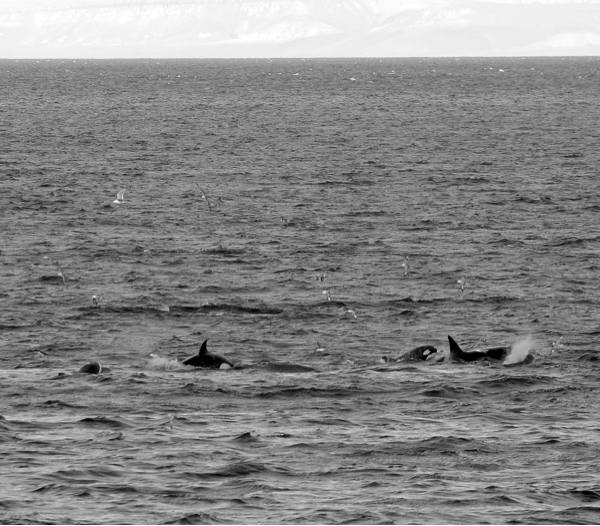
Figure 10. Group of orcas surrounded by patches of oil on the sea surface from the fat of attacked narwhals (Laidre et al 2006).
Orcas’ attacks on narwhals are so common and effective that are beginning to affect the population. The effects are even worse in other cetaceans with smaller population such as whales of Greenland or bowhead (Balena mysticetus), which are now virtually extinct (Figure 11).
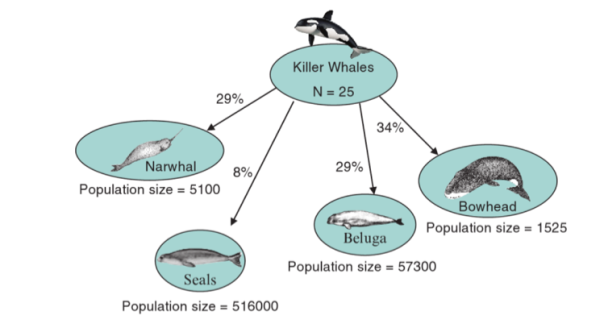
Figure 11. Scheme of preys’ proportions by a group of orcas from Hudson Bay (Ferguson et al 2010).
In conclusion, anthropogenic climate change is affecting the Arctic ecosystem severely (and all the other ecosystems), and although this problem is becoming known, effective policy measures to reduce emissions of CO2 and other greenhouse gases are so scarce that hardly will arrive in time. We are leading the planet Earth to a massive extinction of species and ecological changes ever seen in the history of humans.

The picture says it all: polar bear habitat is running out.
Bibliography
Arctic Council: http://www.arctic-council.org
Ferguson S.H., Higdon J.W. & Chmelnitsky E.G. (2010) The rise of killer whales as a major Arctic predator. In S.H. Ferguson, et al. (eds.): A little less Arctic: top predators in the world’s largest northern inland sea, Hudson Bay. Pp. 117–136. New York: Springer
GISTEMP, Goddard Institute for Space Studies Surface Temperature Analysis (NASA-GISS): http://data.giss.nasa.gov/gistemp/
Hawkings E (2014) nov 28: http://www.climate-lab-book.ac.uk/2014/hiatuses-in-the-rise-of-temperature/
Laidre KL, Heide-Jørgensen MP, Orr J (2006) Reactions of narwhals, Monodon monoceros, to killer whale, Orcinus orca, attacks in the Eastern Canadian Arctic. Can. Field Nat., 120, 457–465
Morell V (2012) Killer whale menu finally revealed. http://www.sciencemag.org/news/2012/01/killer-whale-menu-finally-revealed
PBS Nature: http://www.pbs.org/wnet/nature/invasion-killer-whales-killer-whales-attack-pod-narwhals/11165/
Post et al. (2013) Ecological Consequences of Sea-Ice Decline. Science. DOI: 10.1126/science.1235225: http://www.carbonbrief.org/knock-on-effects-for-wildlife-as-the-arctic-loses-ice
Reeves RR et al (2014) Distribution of endemic cetaceans in relation to hydrocarbon development and commercial shipping in a warming arctic. Marine Policy 44, 375-389
Serreze MC, Holland MM, Stroeve J (2007) Perspectives on the Arctic’s shrinking sea-ice cover. Science 315, 5818, 1533–6.
Taylor PC, Cai M, Hu A, Meehl J, Washington W, Zhang GJ (2013) Decomposition of feedback contributions to Polar Warming Amplification. J Climate 26, 7023-43
The Cryosphere Today: http://arctic.atmos.uiuc.edu/cryosphere/
Wikipedia: https://en.wikipedia.org/wiki/Climate_change
Wikipedia: https://en.wikipedia.org/wiki/Arctic
Young BG, Jeff W. Higdon JW, Steven H. Ferguson SH (2011) Killer whale (Orcinus orca) photo-identification in the eastern Canadian Arctic. Polar Research Vol 30
Human skin microbiota partly shared with our dog
December 25th, 2015
Diversity of the human microbiota in different parts of the body and between individuals
As I have commented in previous posts of this blog (Good Clostridia in our gut March 21st, 2015; Bacteria controlling what we eat October 12th, 2014; Bacteria of breast milk February 3rd, 2013), it becomes increasingly clear the importance of our microbiota, id est, all the micro-organisms, especially bacteria, with which we live.
The human microbiota varies from one individual to another, in relation to diet, age and the own genetic and phenotypic characteristics. Moreover, since we do not live isolated, there is also the influence of the environment, and of other people with we live, including our pets, dogs and others. They all have also their own microbiota.
The human body is home to many different microorganisms: bacteria (and archaea), fungi and viruses, that live on the skin, in the gut and in several other places in the body (Figure 1). While many of these microbes are beneficial to their human host, we know little about most of them. Early research focused on the comparison of the microorganisms found in healthy individuals with those found in people suffering from a particular disease. More recently, researchers have been interested in the more general issues, such as understanding how the microbiota is established and knowing the causes of the similarities and differences between the microbiota of different individuals.
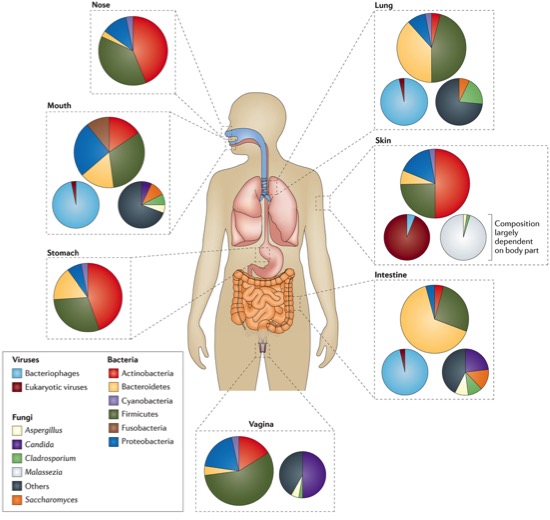
Figure 1. Types of microorganisms that live in different parts of the human body: bacteria (large circles), fungi (small circles right) and viruses (small circles left) (Marsland & Gollwitzer 2014)
Now we know that communities of microorganisms that are found in the gut of genetically related people tend to be more similar than those of people who are not related. Moreover, microbial communities found in the gut of unrelated adults living in the same household are more similar than those of unrelated adults living in different households (Yatsunenko et al 2012). However, these studies have focused on the intestine, and little is known about the effect of the relationship, cohabitation and age in microbiota of other parts of the body, such as skin.
Human skin microbiota
The skin is an ecosystem of about 1.8 m2 of various habitats, with folds, invaginations and specialized niches that hold many types of microorganisms. The main function of the skin is to act as a physical barrier, protecting the body from potential attacks by foreign organisms or toxic substances. Being also the interface with the external environment, skin is colonized by microorganisms, including bacteria, fungi, viruses and mites (Figure 2). On its surface there are proteobacteria, propionibacteria, staphylococci and some fungi such as Malassezia (an unicellular basidiomycetous). Mites such as Demodex folliculorum live around the hair follicles. Many of these microorganisms are harmless and often they provide vital functions that the human genome has not acquired by evolution. The symbiotic microorganisms protect human from other pathogenic or harmful microbes. (Grice & Segre 2011).

Figure 2. Schematic cross section of human skin with the different microorganisms (Grice & Segre 2011).
According to the commented diversity of microbiota, this is also very different depending on the region of skin (Figure 3), and therefore depending on the different microenvironments, that can be of three different characteristics: sebaceous or oily, wet and dry.
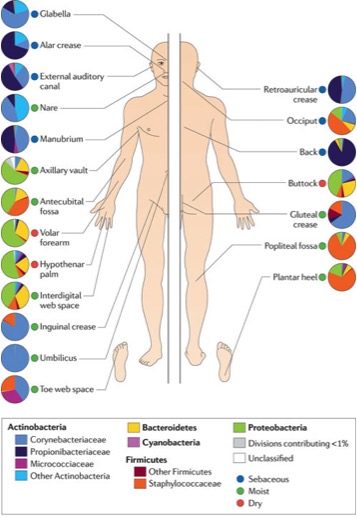
Figure 3. Topographic distribution of bacterial types in different parts of the skin (Grice & Segre 2011)
The skin is a complex network (structural, hormonal, nervous, immune and microbial) and in this sense it has been proven that the resident microbiota collaborates with the immune system, especially in the repair of wounds (Figure 4). As we see, particularly the lipopotheicoic acid (LTA), compound of the bacterial cell wall, can be released by Staphylococcus epidermidis and stimulates Toll-like receptors TLR2, which induce the production of antimicrobial peptides, and also stimulate epidermal keratinocytes via TLR3, which trigger the inflammation with production of interleukin and attracting leukocytes (Heath & Carbone 2013). All this to ensure the homeostatic protection and the defence against the potential pathogens. More information in the review of Belkaid & Segre (2014).
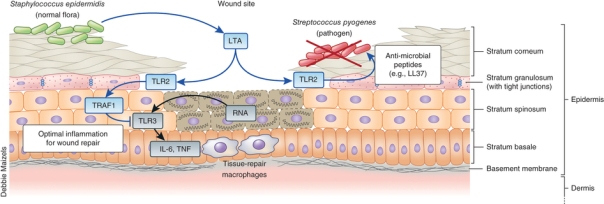
Figure 4. Contribution of the resident microbiota to the immunity and wound repair (Heath & Carbone 2013)
At home we share microbiota, and with the dog
As mentioned earlier, environment influences the microbiota of an individual, and therefore, individuals who live together tend to share some of the microbiota. Indeed, it was recently studied by Song et al (2013), with 159 people and 36 dogs from 60 families (couples with children and / or dogs). They study the microbiota of gut, tongue and skin. DNA was extracted from a total of 1076 samples, amplifying the V2 region of the 16S rRNA gene with specific primers, and then it was proceeded to multiplex sequencing of high performance (High-Throughput Sequencing) with an Illumina GA IIx equipment. Some 58 million sequences were obtained, with an average of 54,000 per sample, and they were analysed comparing with databases to find out what kind of bacteria and in what proportions.
The results were that the microbial communities were more similar to each other in individuals who live together, especially for the skin, rather than the bowel or the tongue. This was true for all comparisons, including pairs of human and dog-human pairs. As shown in Figure 5, the number of bacterial types shared between different parts was greater (front, palms and finger pulps dog) of the skin of humans and their own dog (blue bars) than the human with dogs of other families (red bars), or dogs with people without dogs (green bars). We also see that the number of shared bacterial types is much lower when compared faecal samples or the tongue (Song et al 2013).
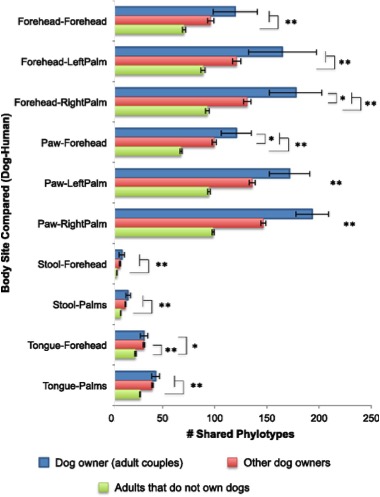
Figure 5. Numbers of bacterial phylotypes (phylogenetic types) shared between adults and their dogs (blue), adults with other dogs (red) and adults who do not have dogs with dogs. There are compared (dog-human) fronts, hands, legs pulps, and also faecal samples (stool) and tongues. Significance of being different: *p<0.05, **p<0.001 (Song et al 2013)
This suggests that humans probably take a lot of microorganisms on the skin by direct contact with the environment and that humans tend to share more microbes with individuals who are in frequent contact, including their pets. Song et al. (2013) also found that, unlike what happens in the gut, microbial communities in the skin and tongue of infants and children were relatively similar to those of adults. Overall, these findings suggest that microbial communities found in the intestine change with age in a way that differs significantly from those found in the skin and tongue.
Although is not the main reason for this post, briefly I can say that the overall intestinal microbiota of dogs is not very different from humans in numbers (1011 per gram) and diversity, although with a higher proportion of Gram-positive (approx. 60% clostridial, 12% lactobacilli, 3% bifidobacteria and 3% corynebacteria) in dogs, and less Gram-negative (2% Bacteroides, 2% proteobacteria) (García-Mazcorro Minamoto & 2013).
Less asthma in children living with dogs
Although the relationship with the microbiota has not fully been demonstrated, some evidence of the benefits of having a dog has been shown recently, and for the physical aspects, not just for the psychological ones. Swedish researchers (Fall et al 2015) have carried out a study of all new-borns (1 million) in Sweden since 2001 until 2010, counting those suffering asthma at age 6. As the Swedes also have registered all dogs since 2001, these researchers were able to link the presence of dogs at home during the first year of the baby with the onset of asthma or no in children, and have come to the conclusion that children have a lower risk of asthma (50% less) if they have grown in the presence of a dog.
Similar results were obtained for children raised on farms or in rural environments, and thus having contact with other animals. All this would agree with the “hygiene hypothesis”, according to which the lower incidence of infections in Western countries, especially in urban people, would be the cause for increased allergic and autoimmune diseases (Okada et al 2010). In line with the hypothesis, it is believed that the human immune system benefits from living with dogs or other animals due to the sharing of the microbiota. However, in these Swede children living with dogs and having less risk of asthma there was detected a slight risk of pneumococcal disease. This links to the aforementioned hypothesis: more infections and fewer allergies (Steward 2015), but with the advantage that infections are easily treated or prevented with vaccines.

References
Belkaid Y, Segre JA (2014) Dialogue between skin microbiota and immunity. Science 346, 954-959
Fall T, Lundholm C, Örtqvist AK, Fall K, Fang F, Hedhammar Å, et al (2015) Early Exposure to Dogs and Farm Animals and the Risk of Childhood Asthma. JAMA Pediatrics 69(11), e153219
García-Mazcorro JF, Minamoto Y (2013) Gastrointestinal microorganisms in cats and dogs: a brief review. Arch Med Vet 45, 111-124
Heath WR, Carbone FR (2013) The skin-resident and migratory immune system in steady state and memory: innate lymphocytes, dendritic cells and T cells. Nature Immunology 14, 978-985
Marsland BJ, Gollwitzer ES (2014) Host–microorganism interactions in lung diseases. Nature Reviews Immunology 14, 827-835
Okada H, Kuhn C, Feillet H, Bach JF (2010) The “hygiene hypothesis” for autoimmune and allergic diseases: an update. Clin Exp Immunol 160, 1-9
Song SJ, Lauber C, Costello EK, Lozupone, Humphrey G, Berg-Lyons D, et al (2013) Cohabiting family members share microbiota with one another and with their dogs. eLife 2, e00458, 1-22
Steward D (2015) Dogs, microbiomes, and asthma risk: do babies need a pet ? MD Magazine, Nov 03
Yatsunenko T, Rey FE, Manary MJ, Trehan I, Dominguez-Bello MG, Contreras M, et al. 2012. Human gut microbiome viewed across age and geography. Nature 486, 222–7



